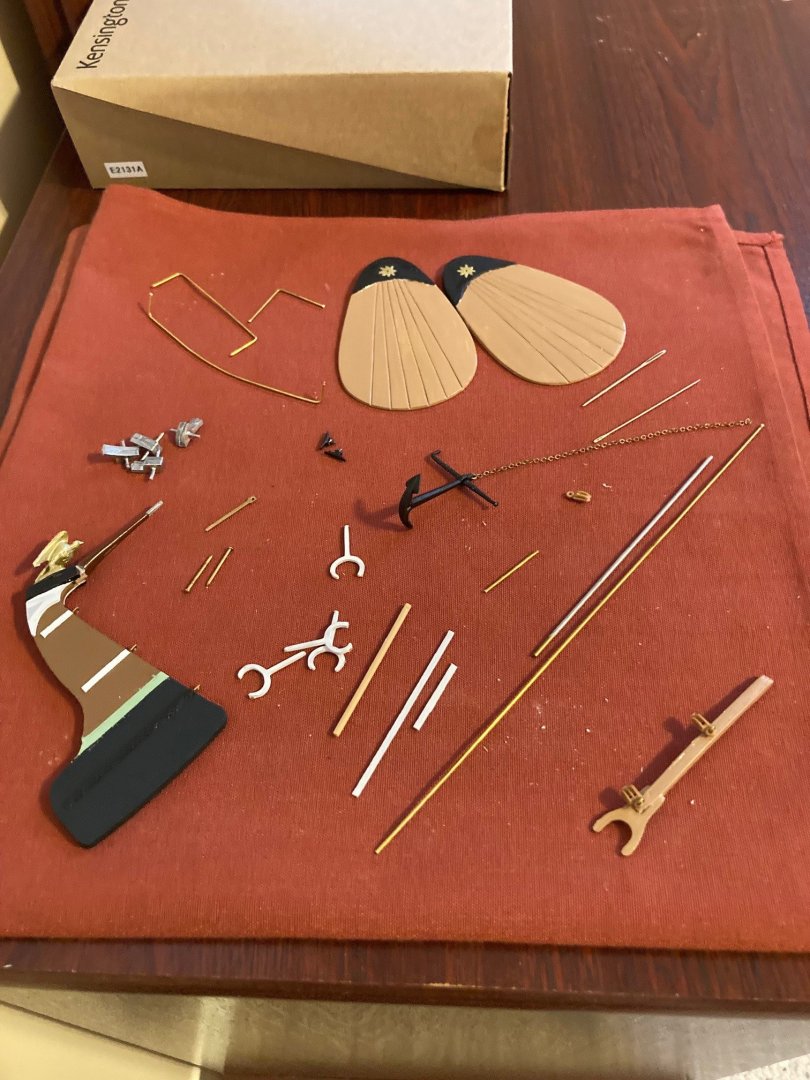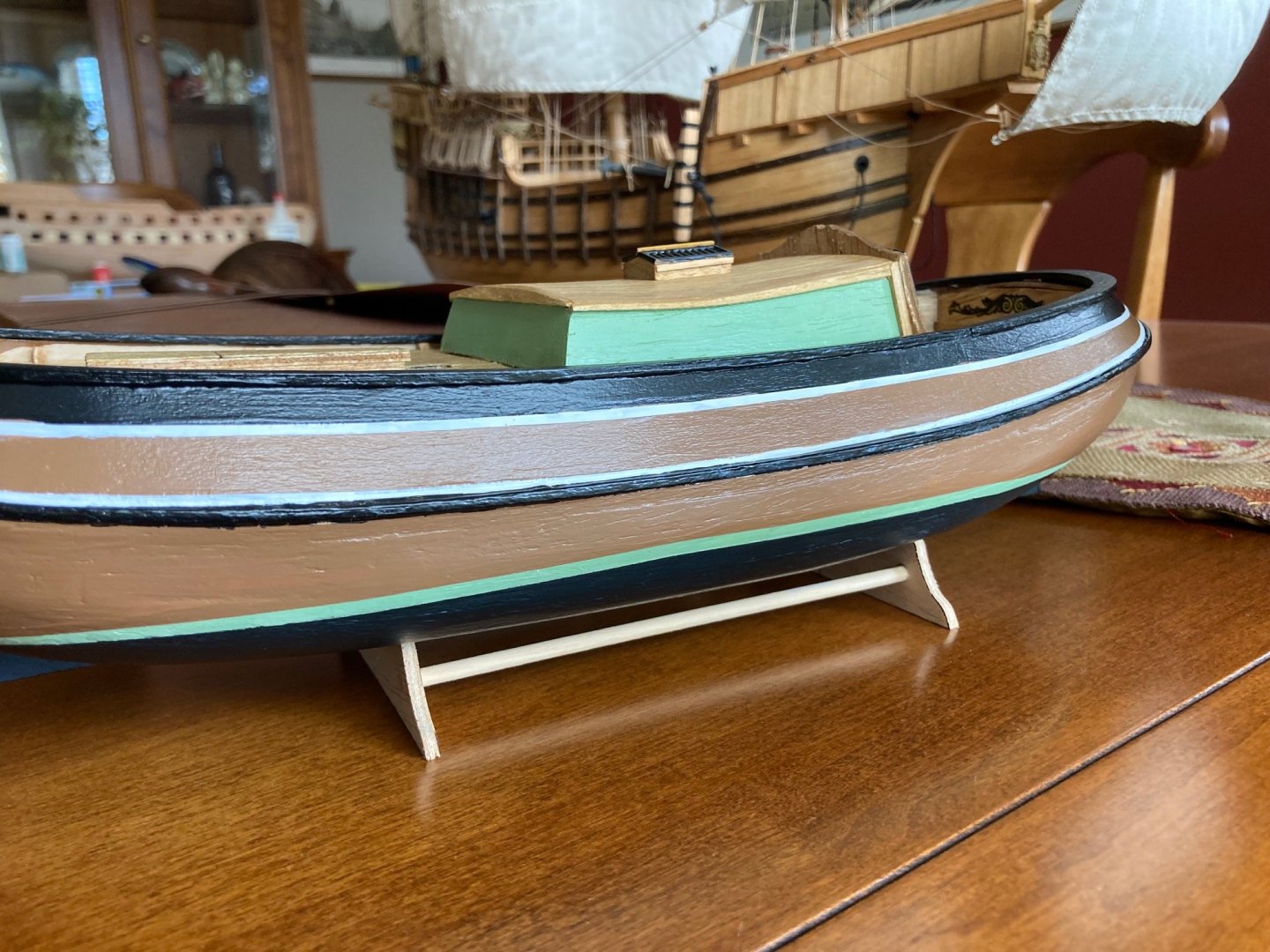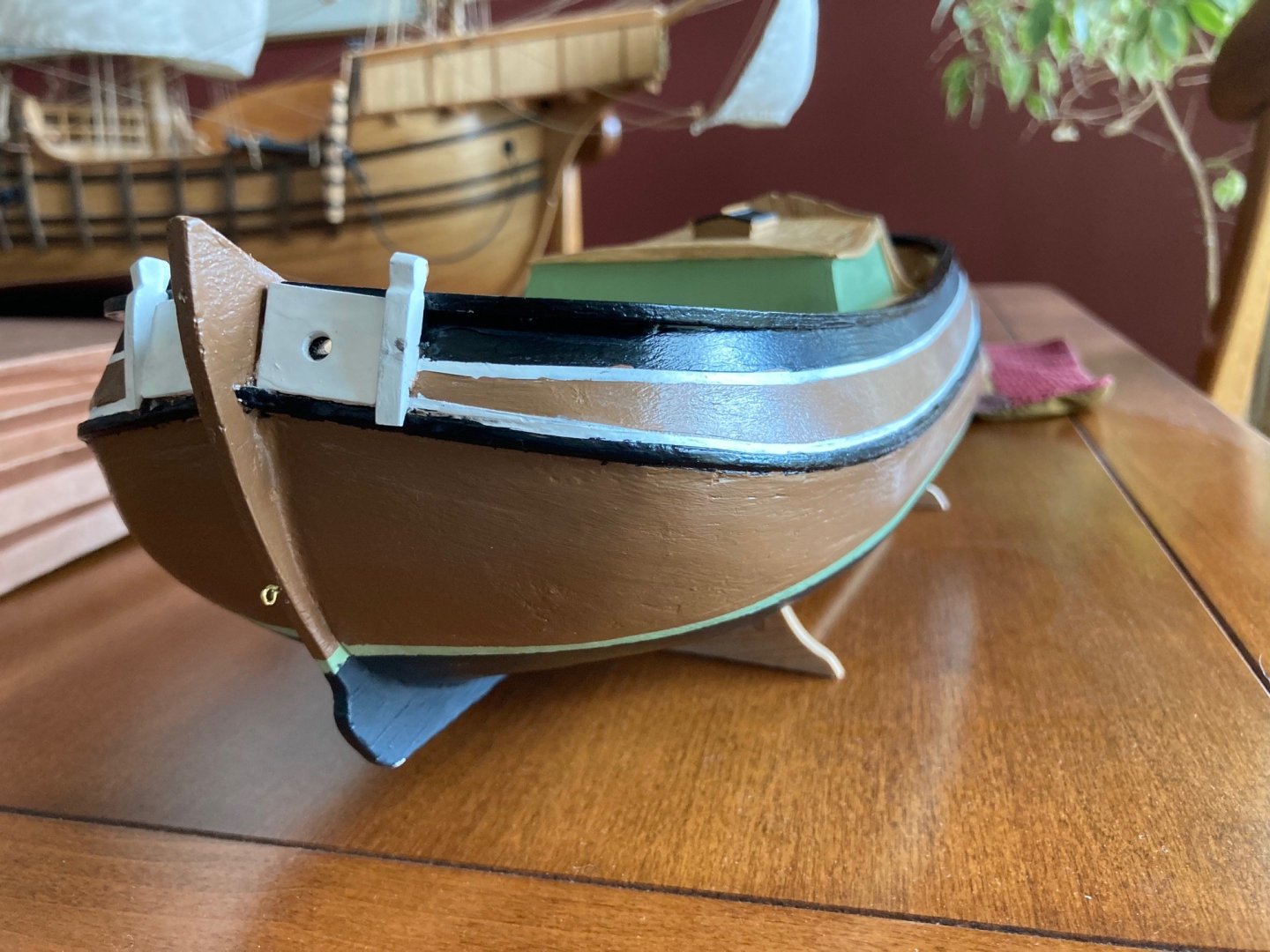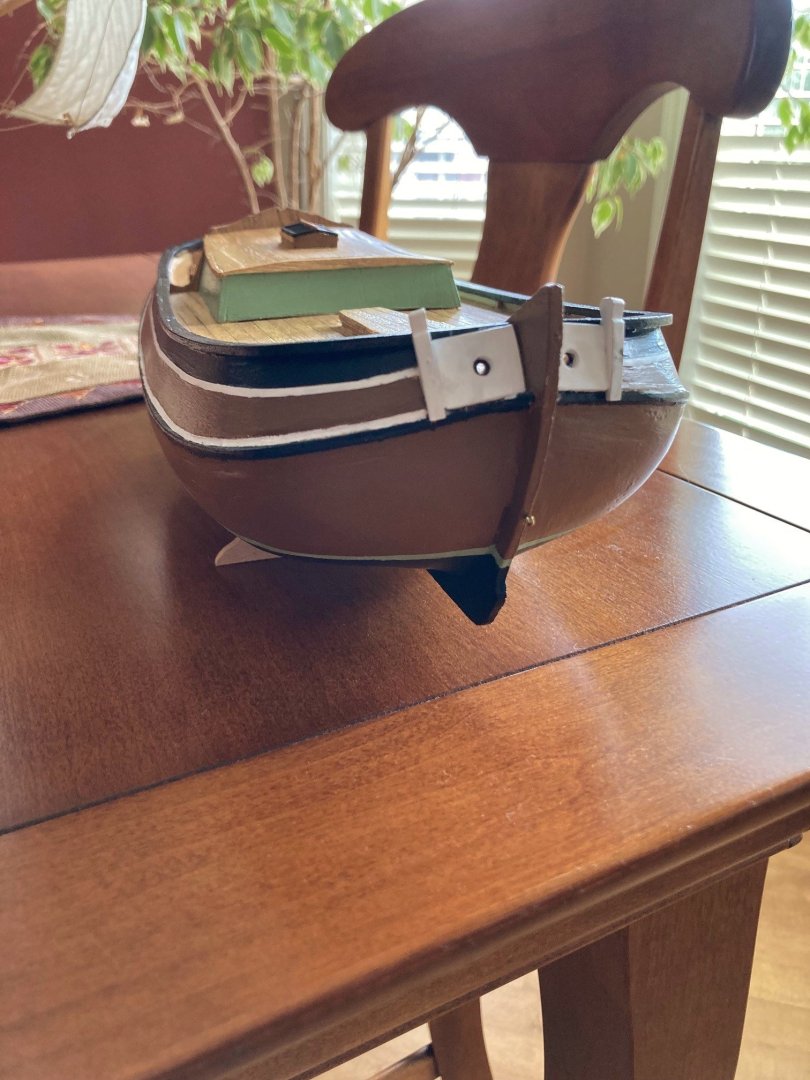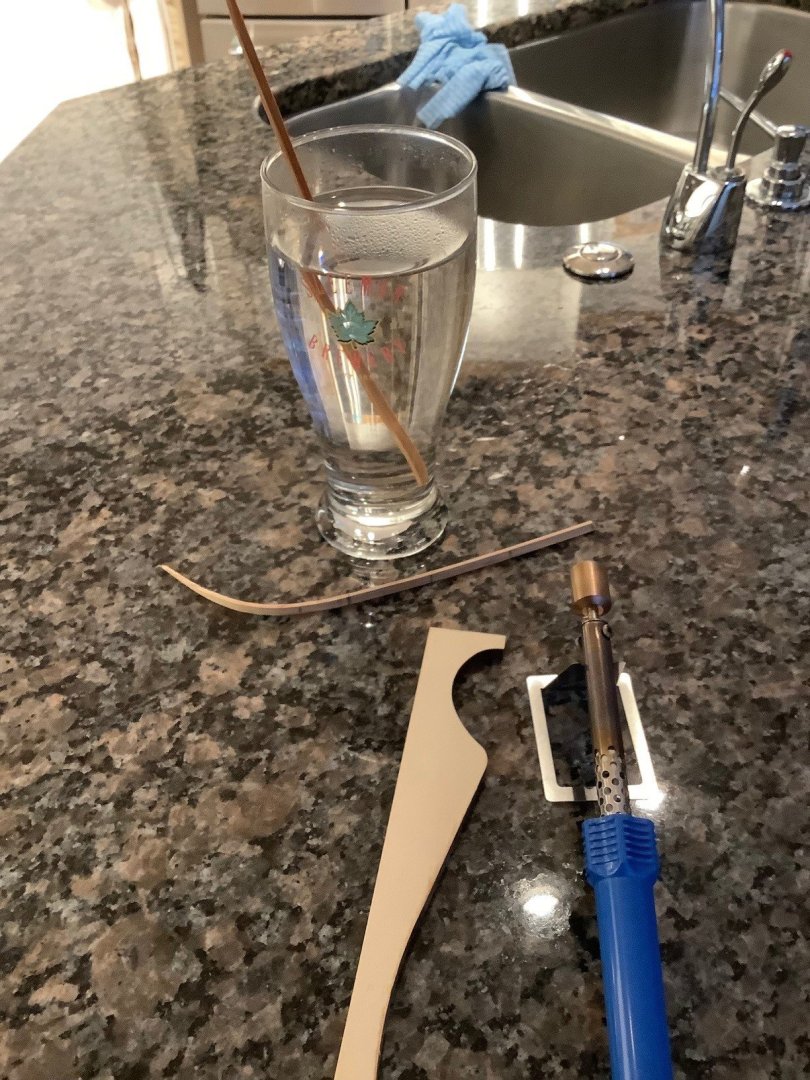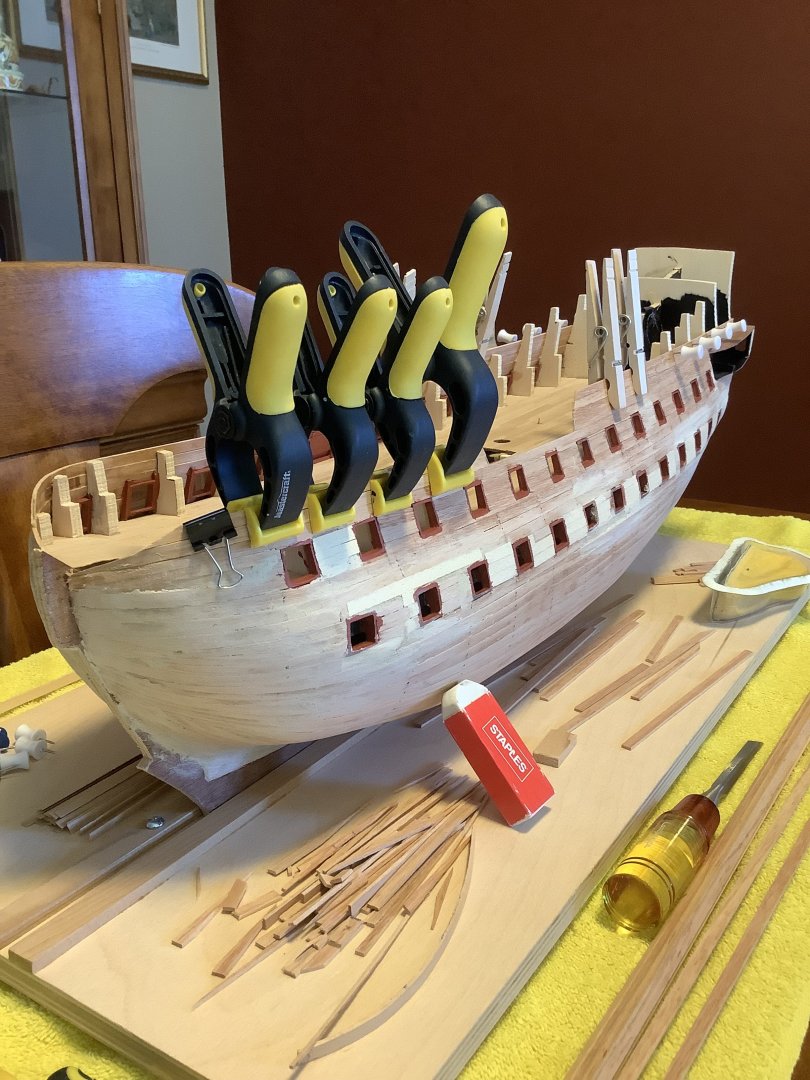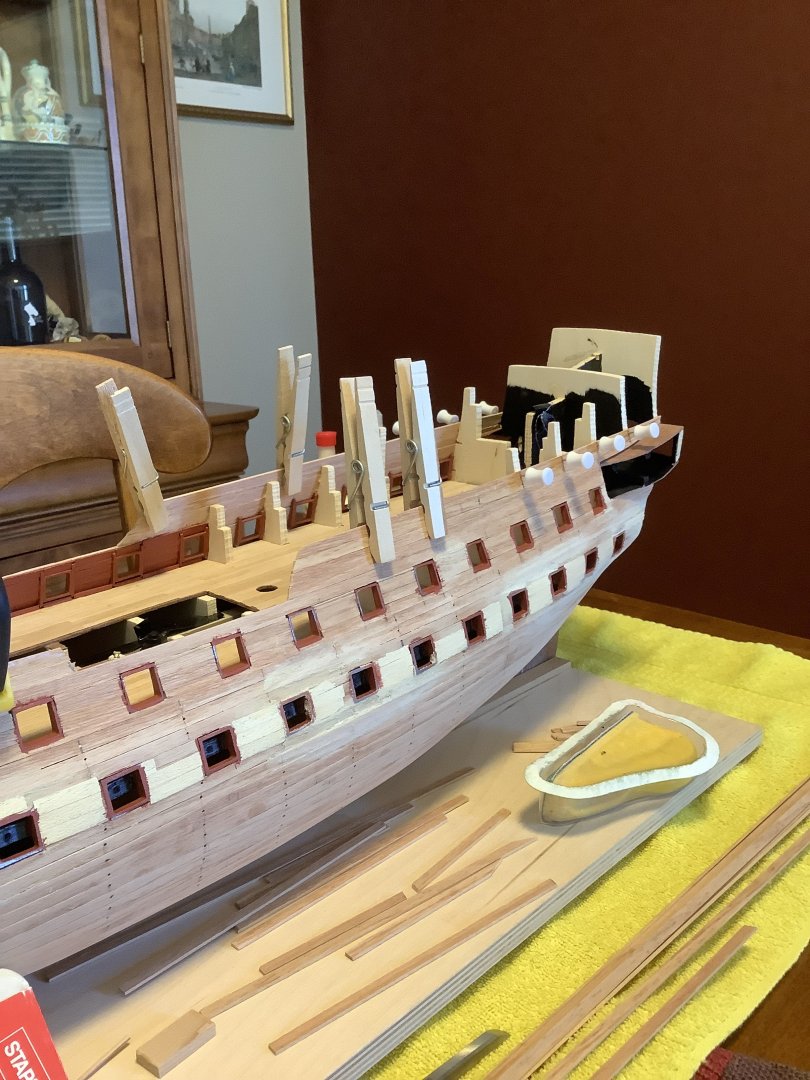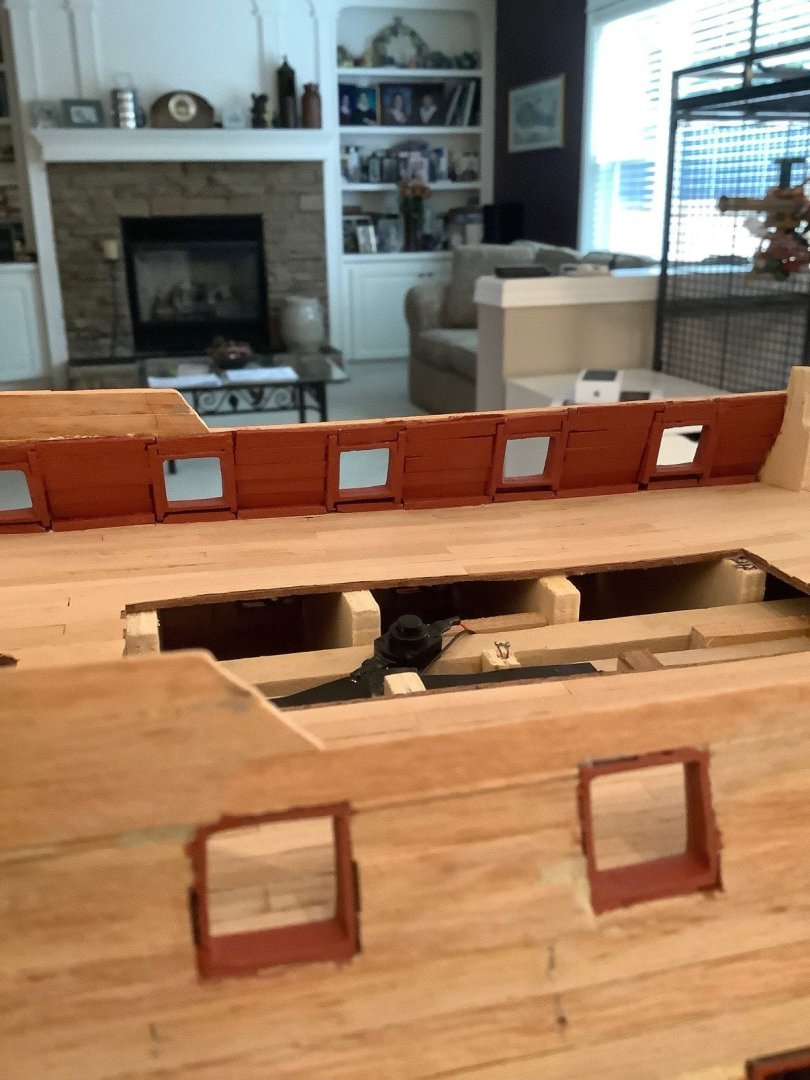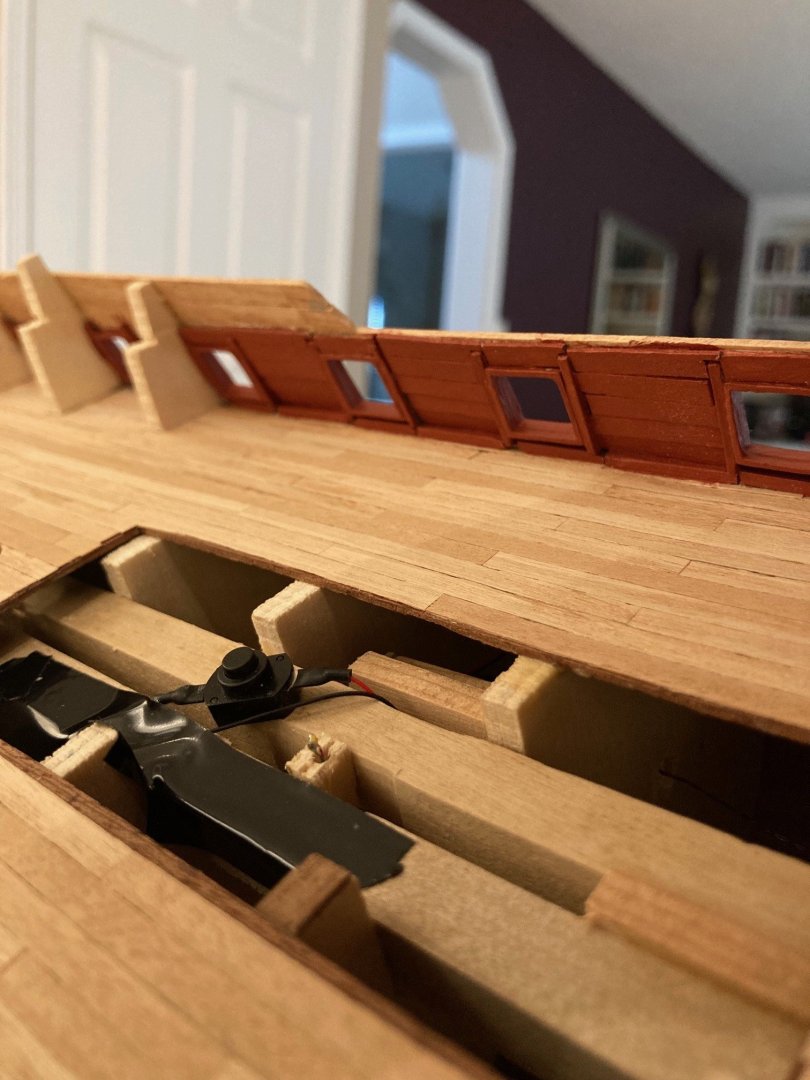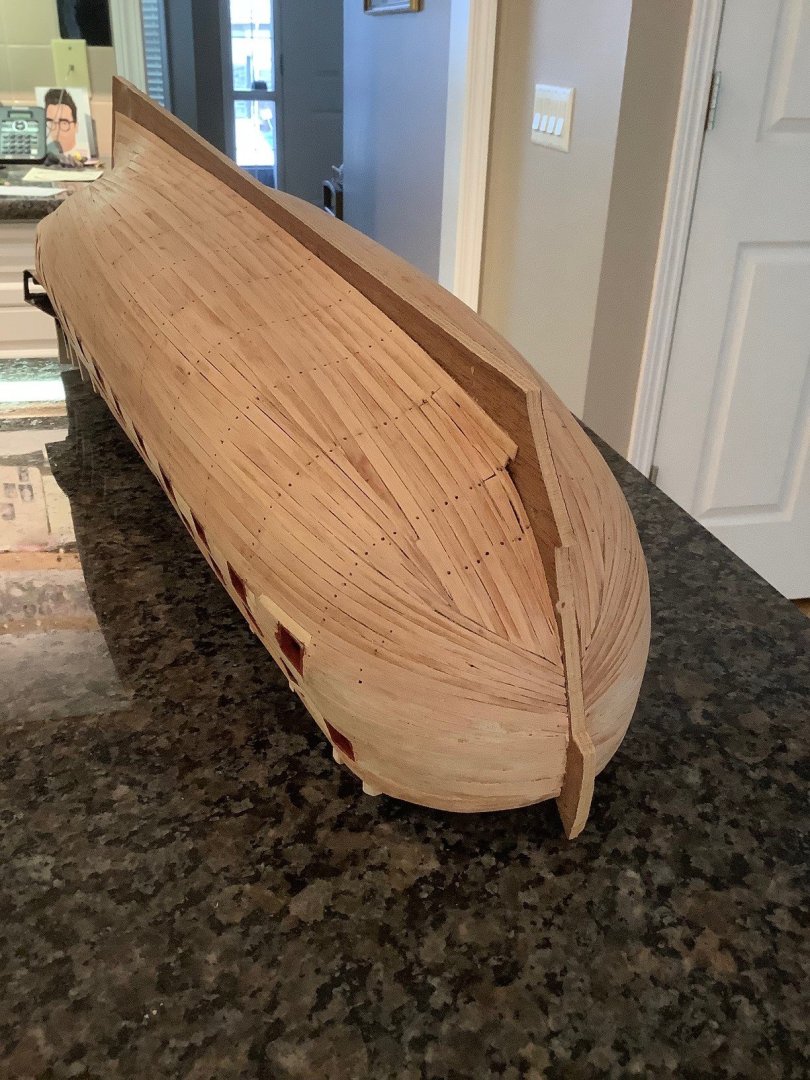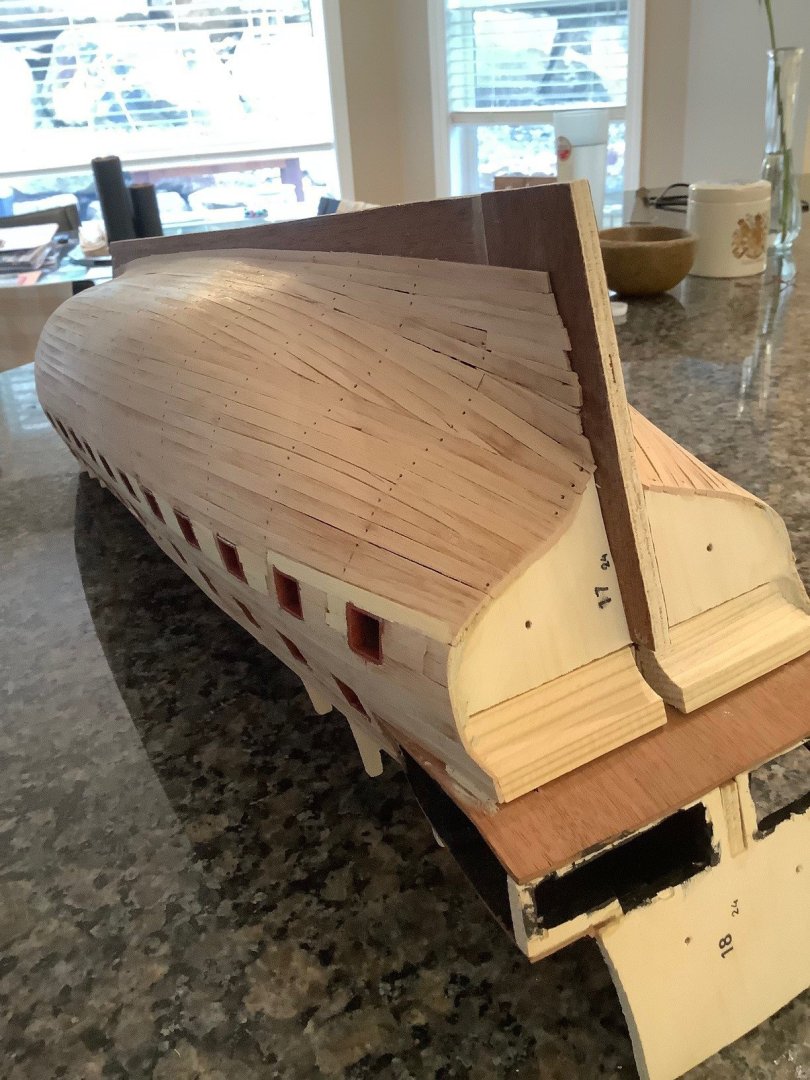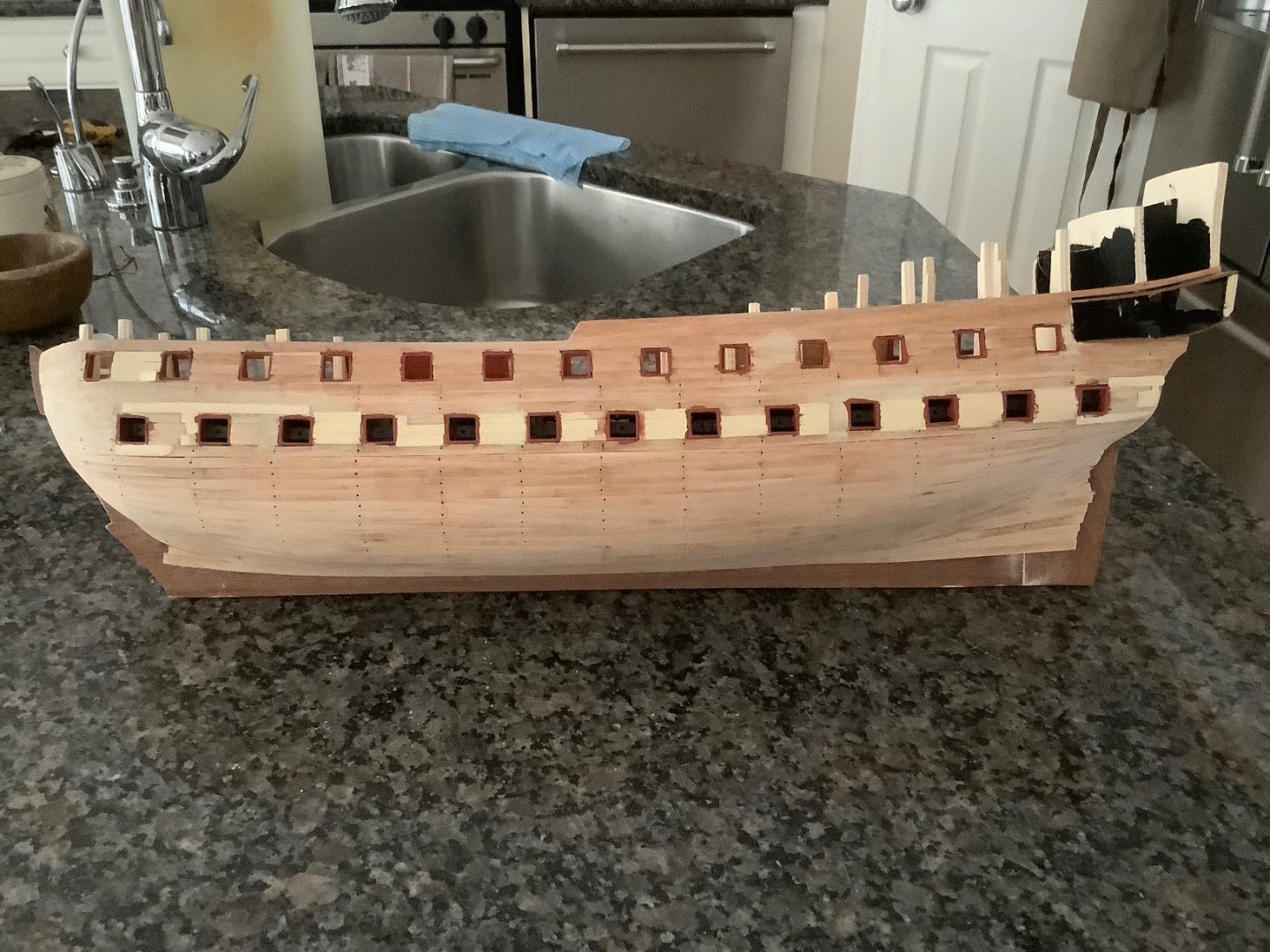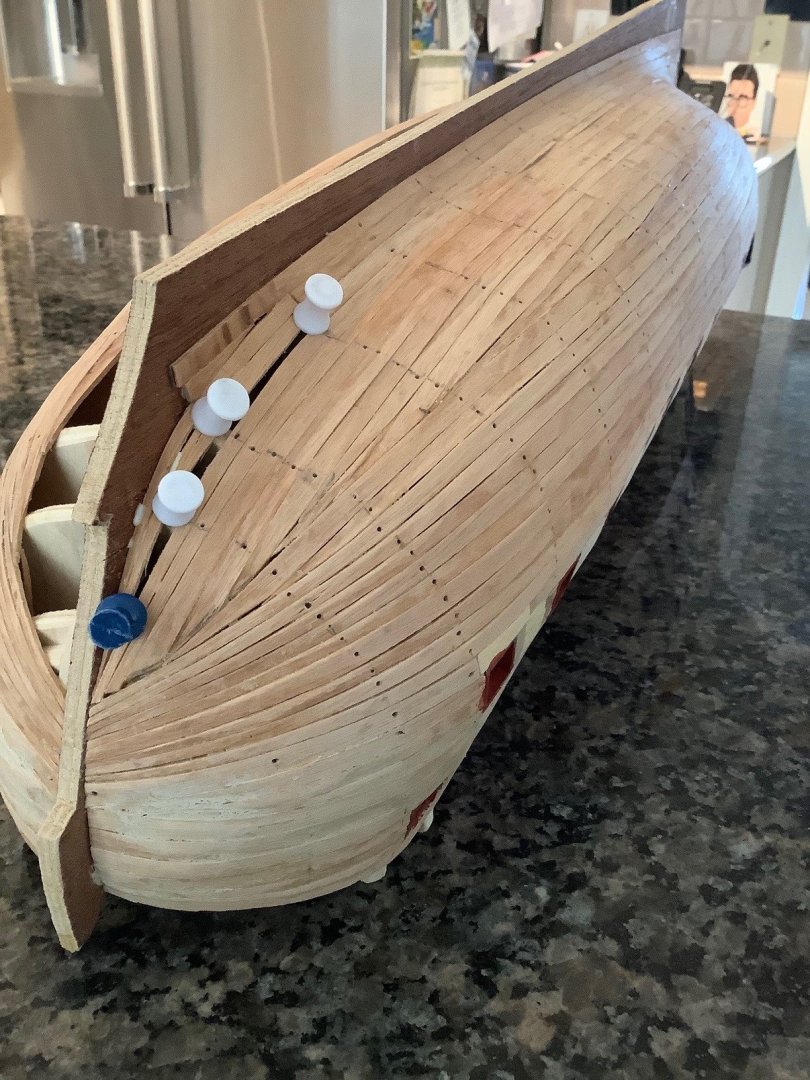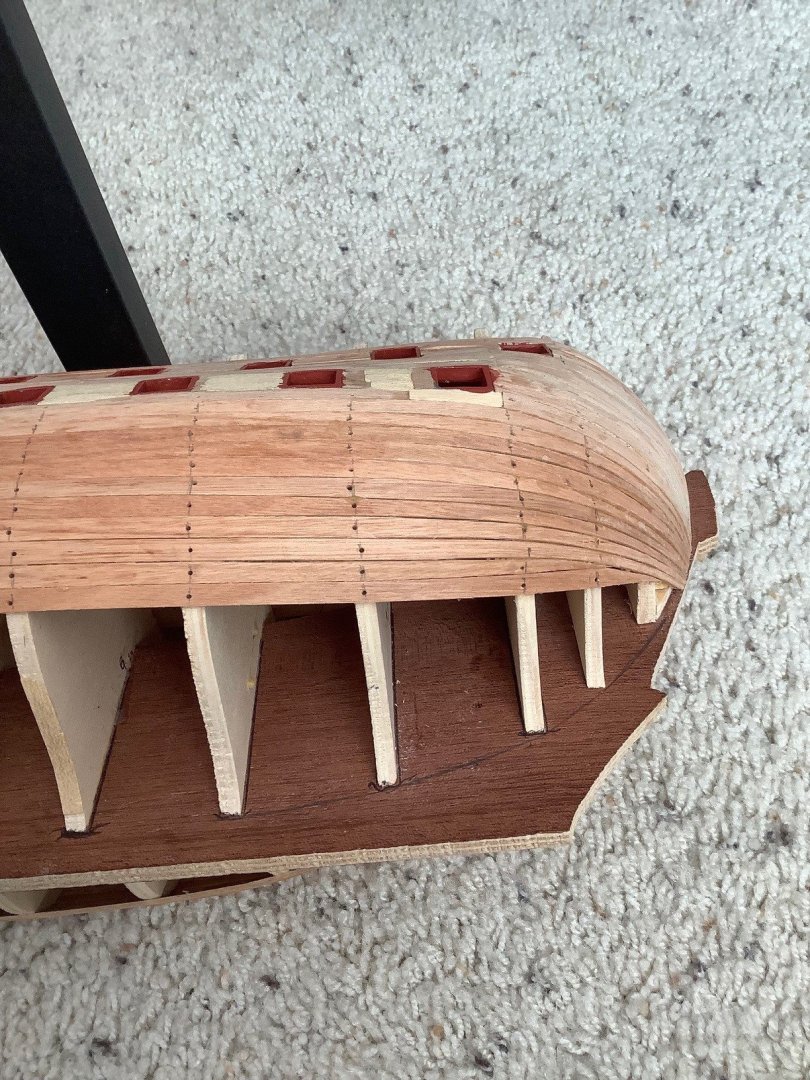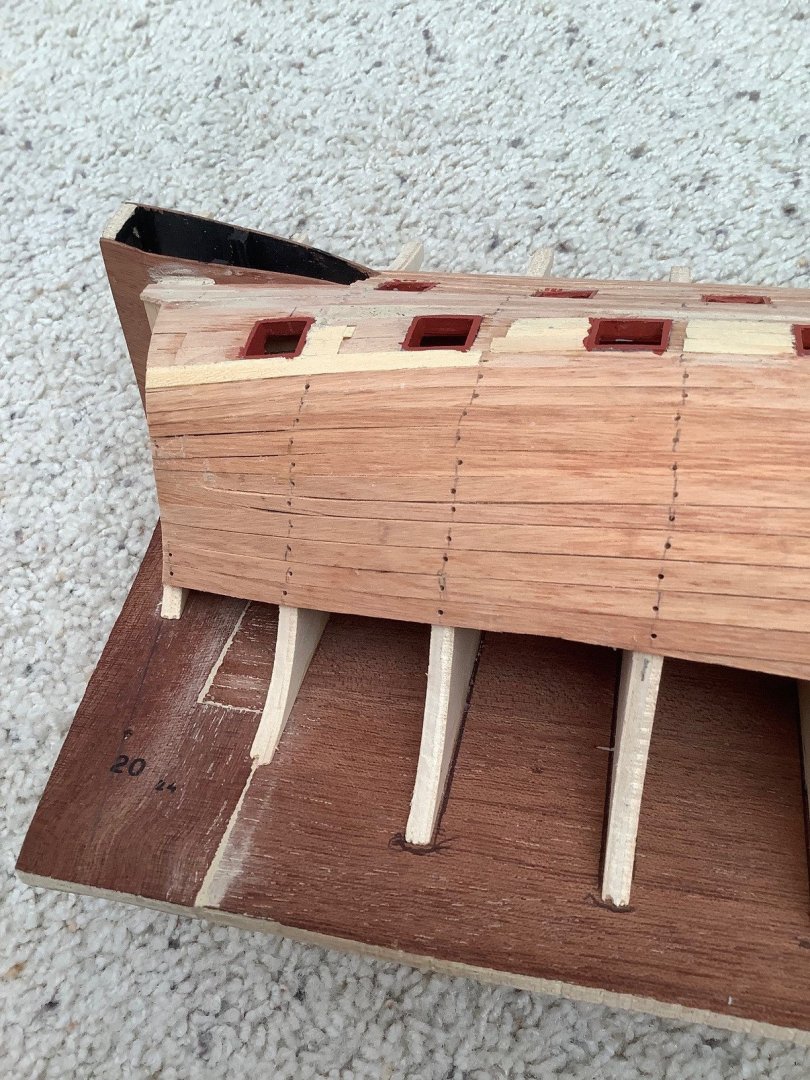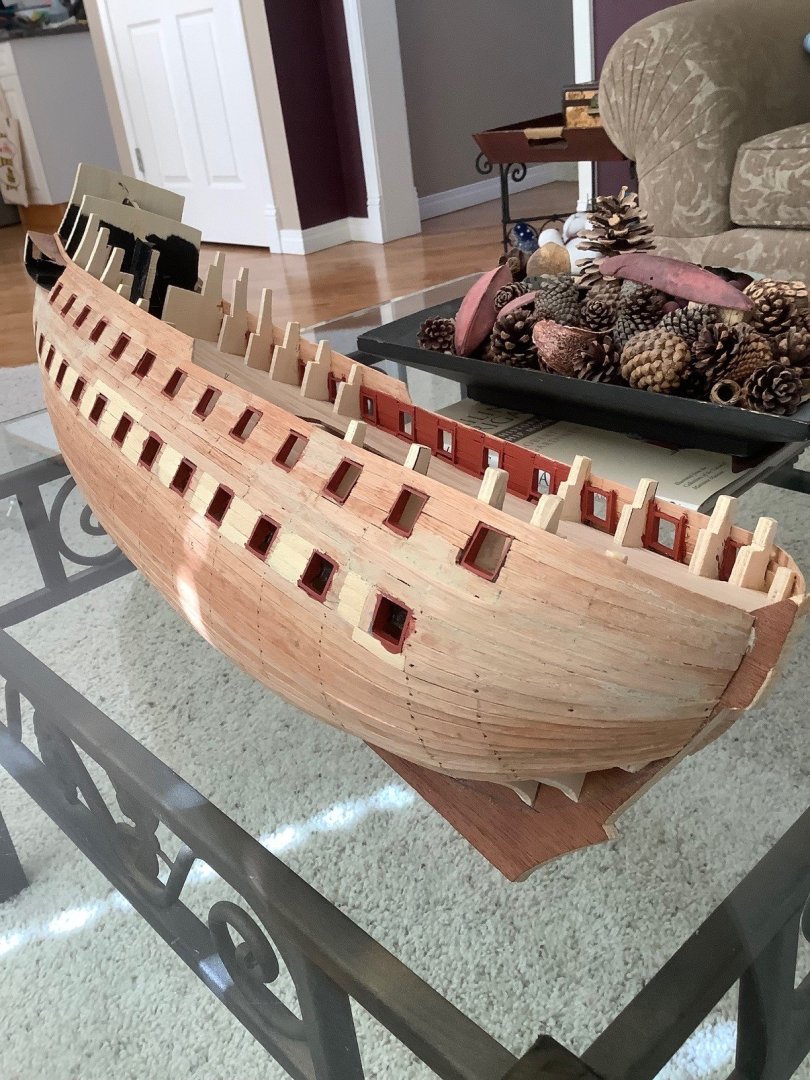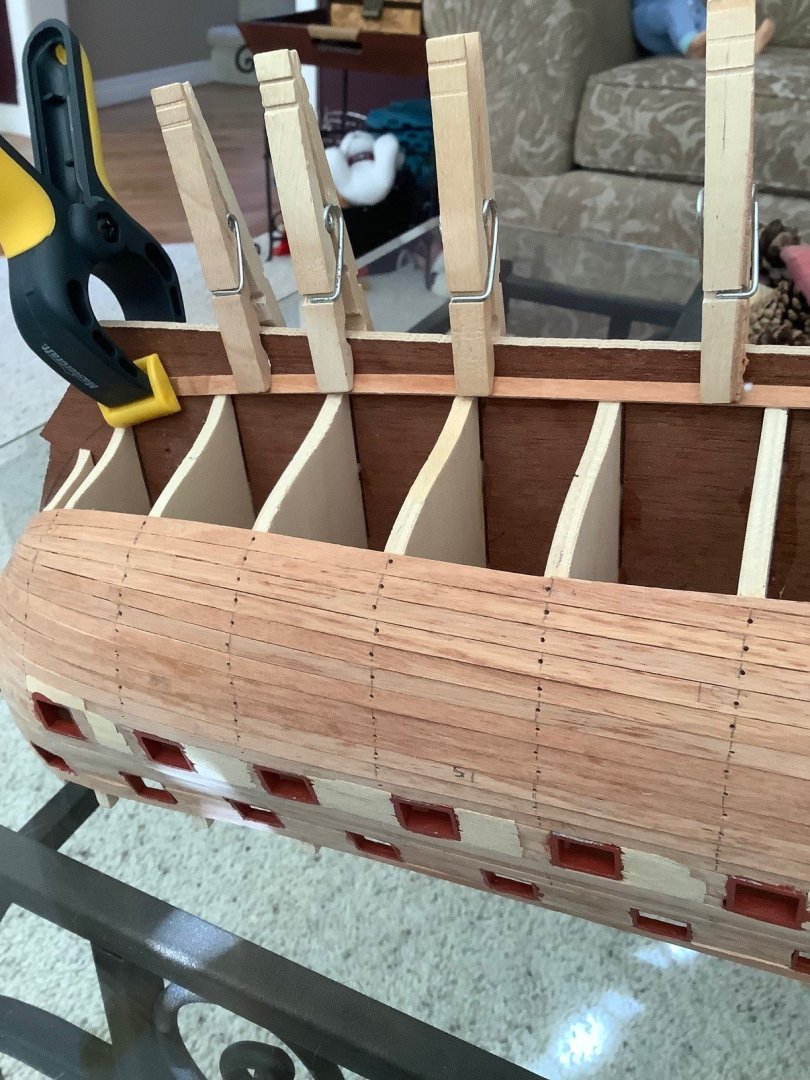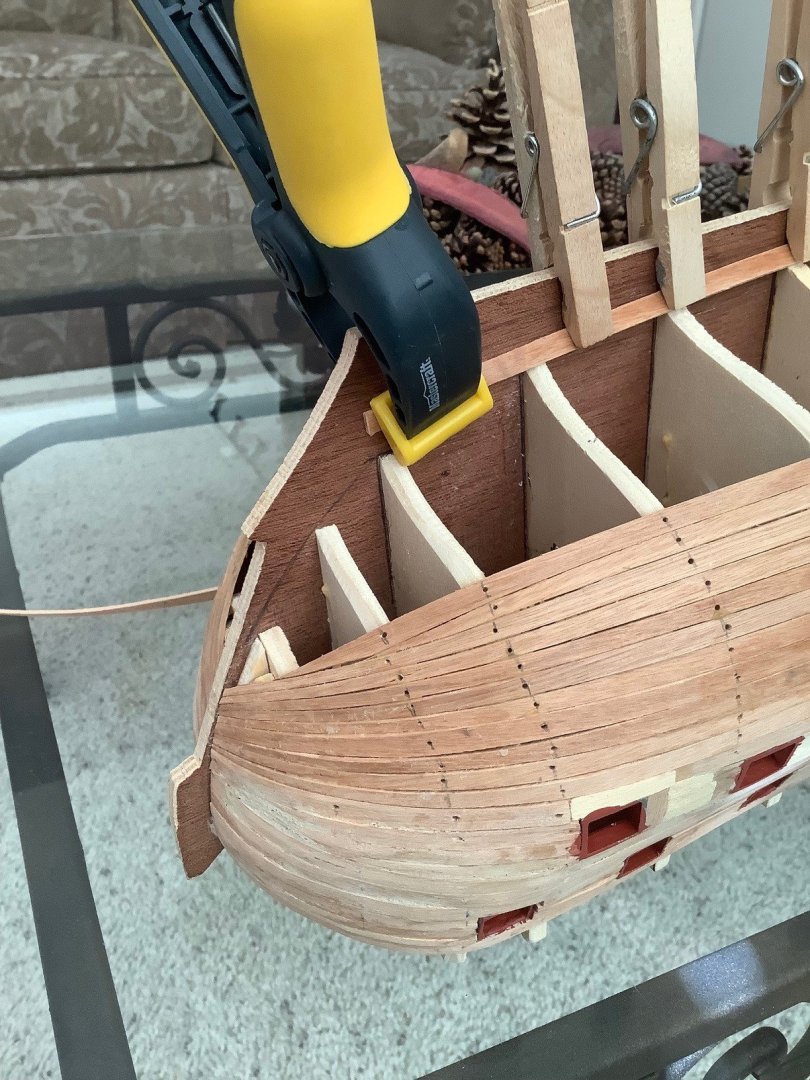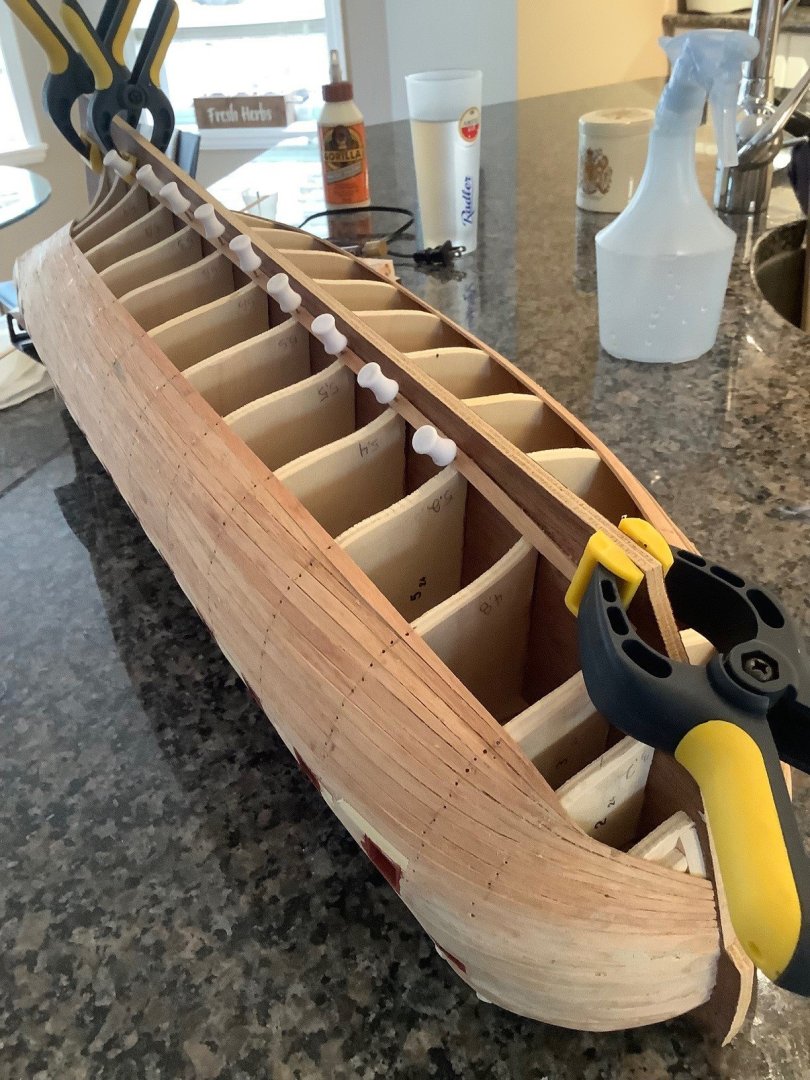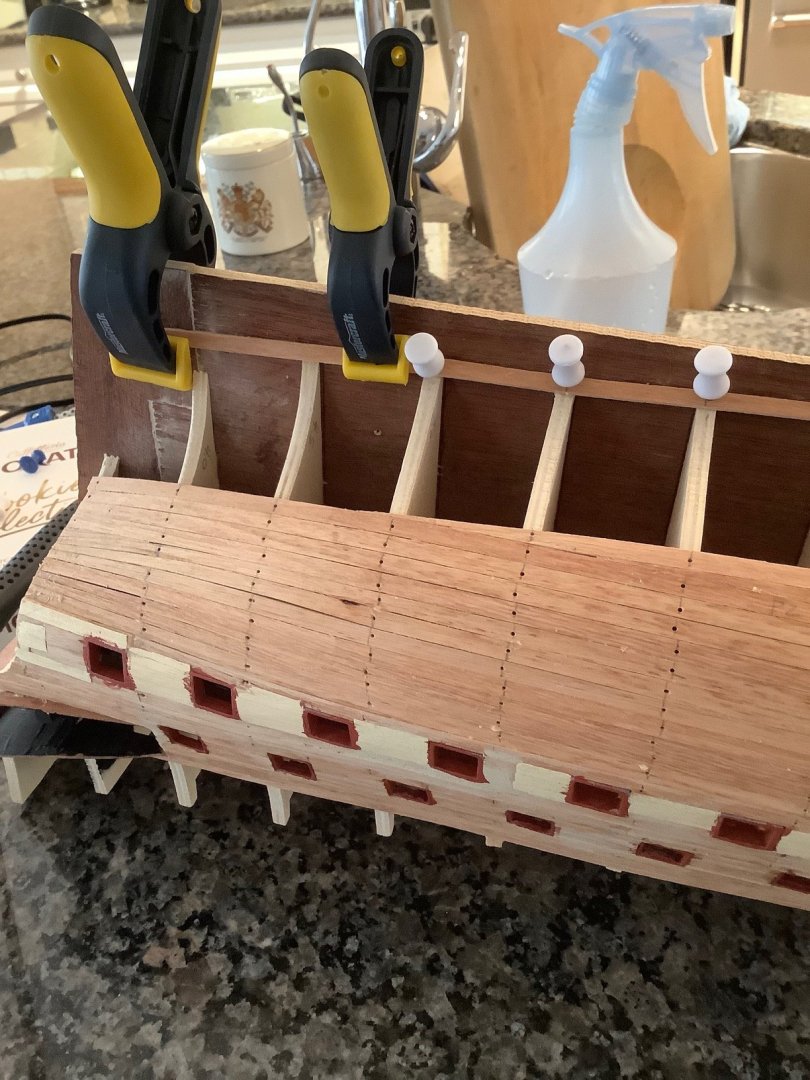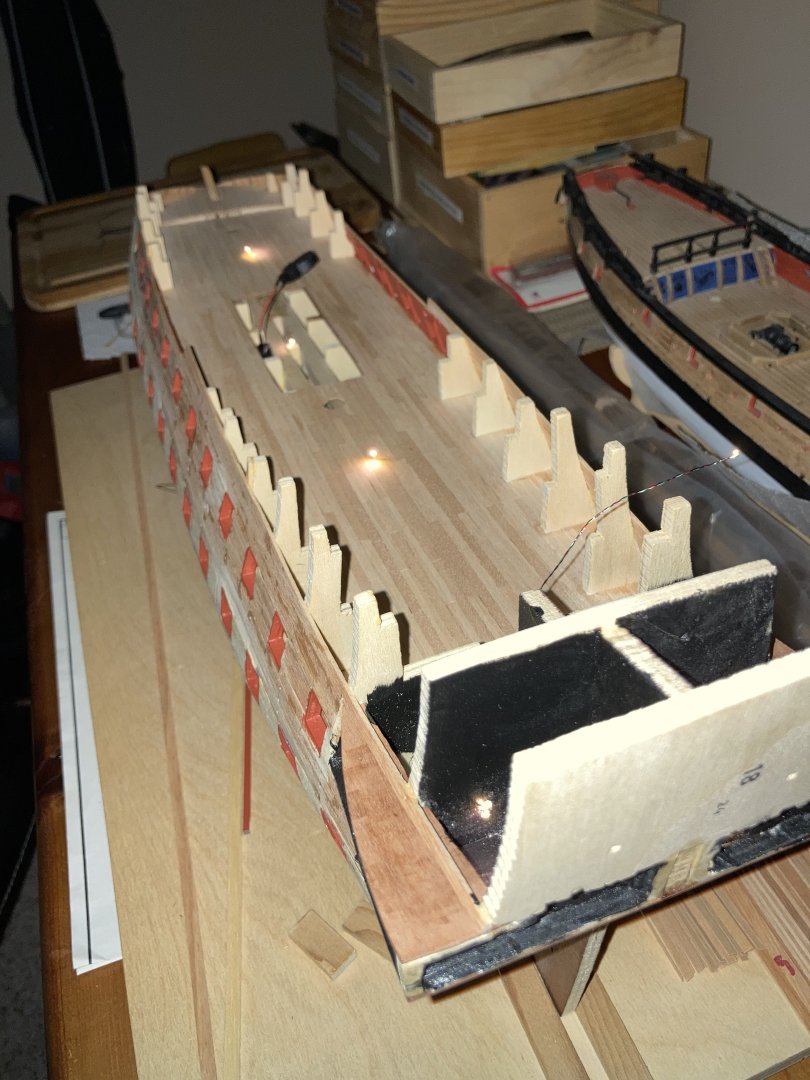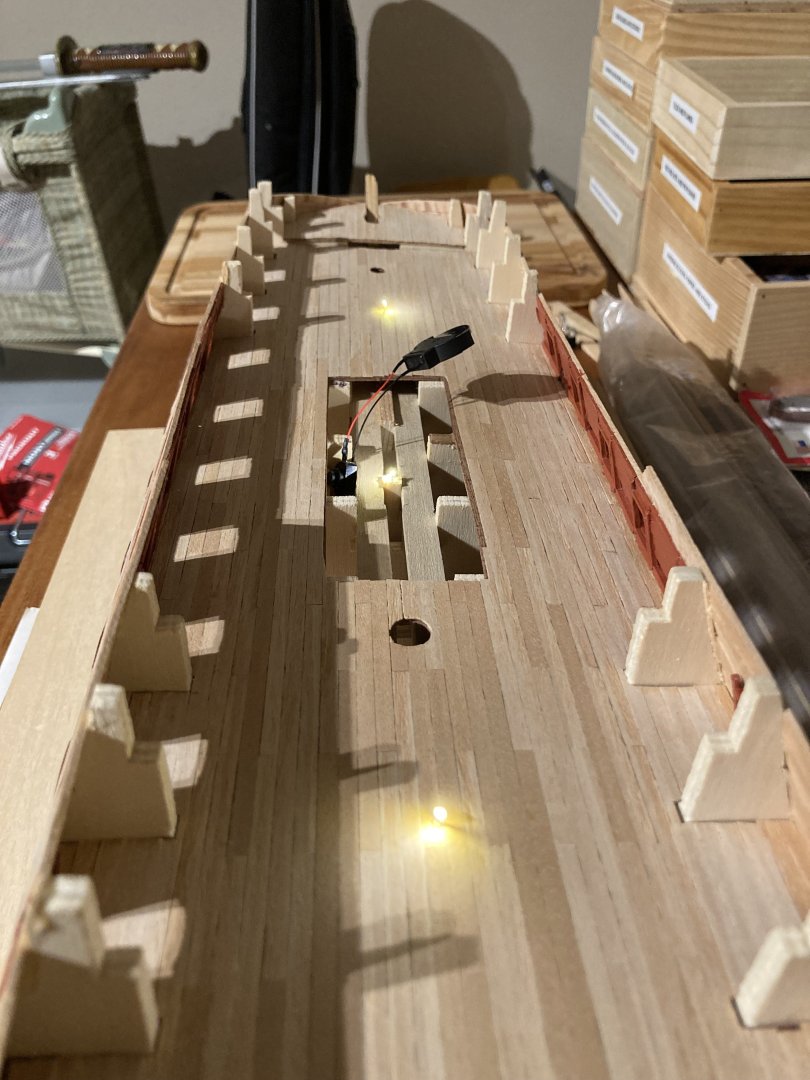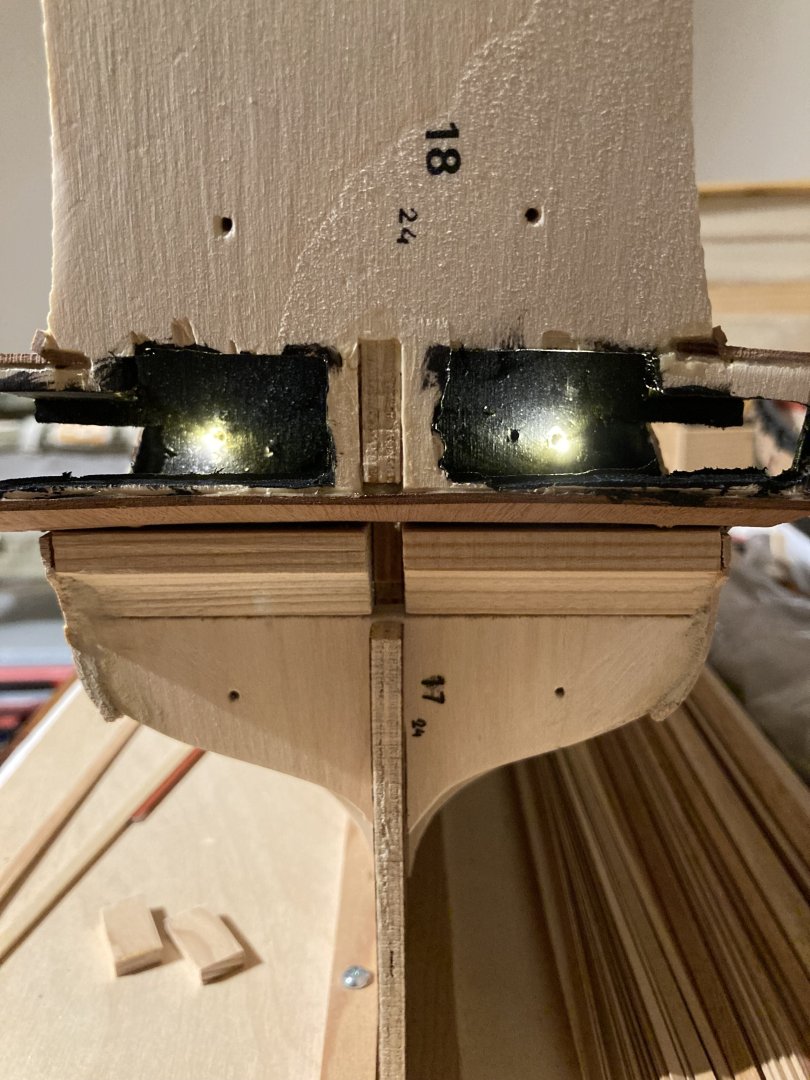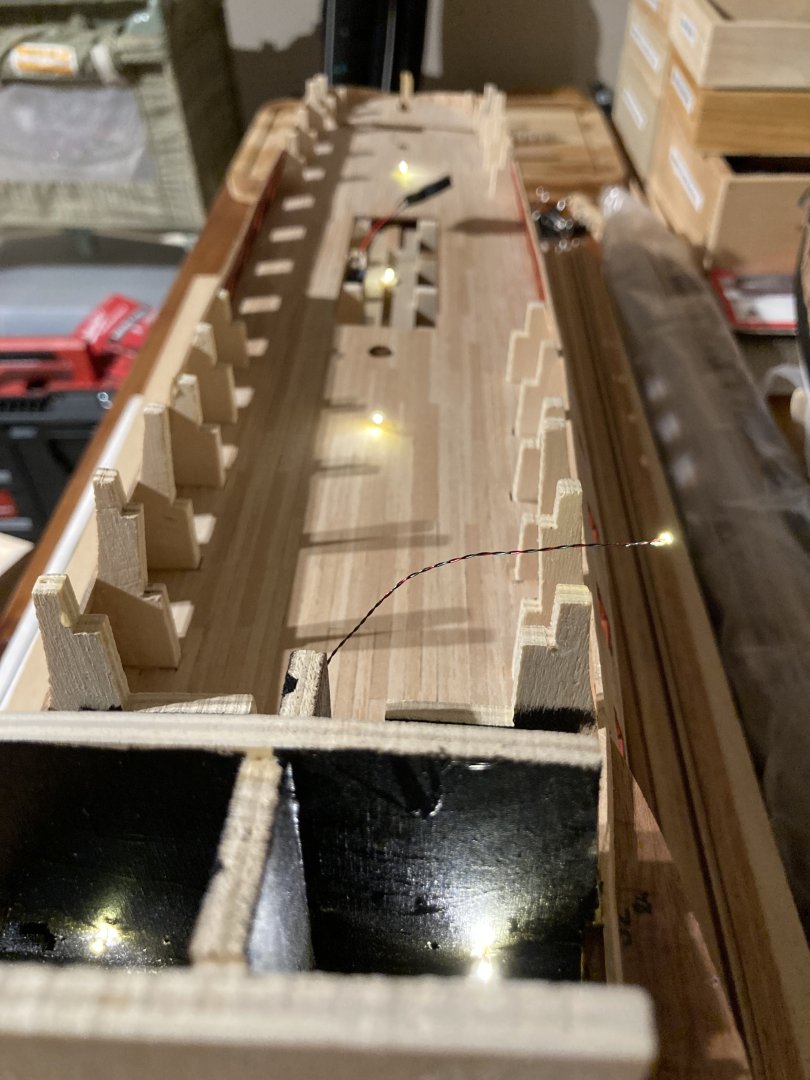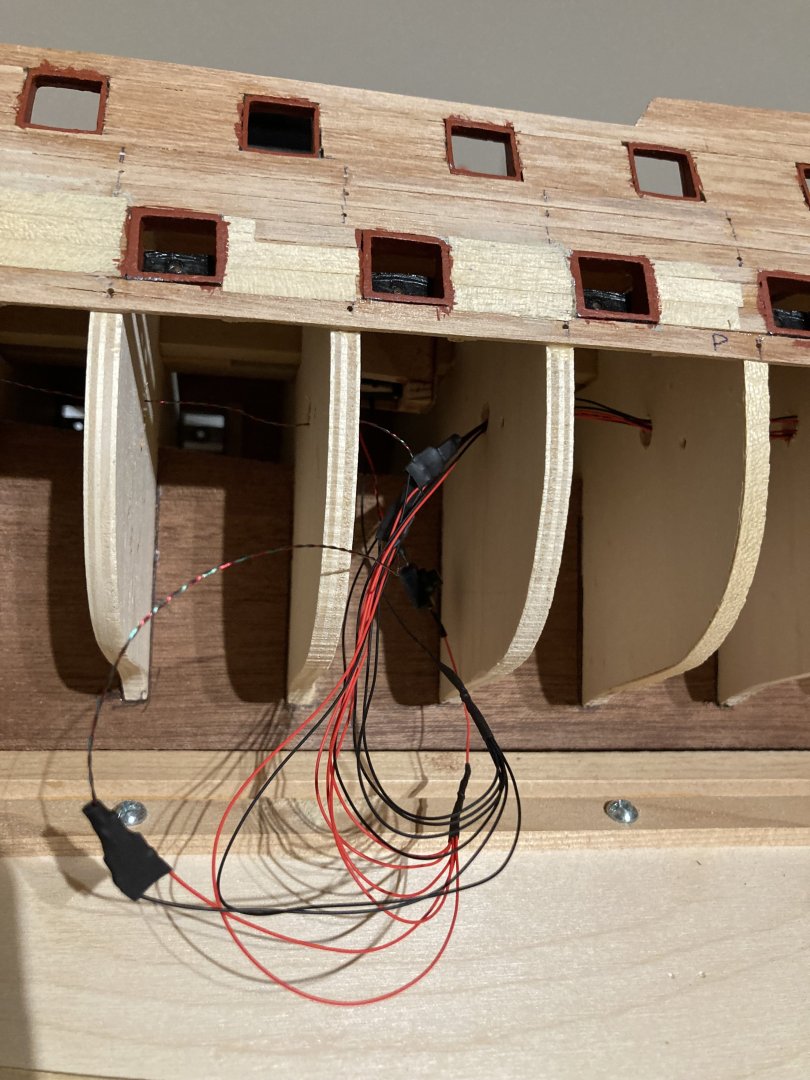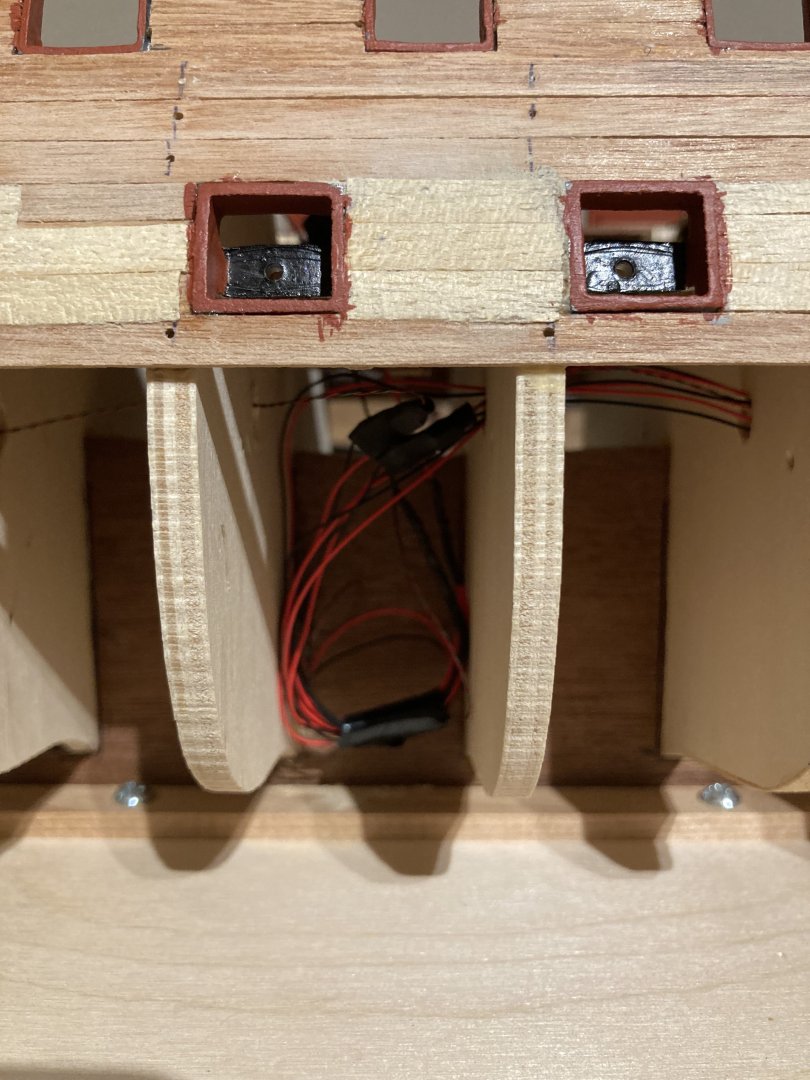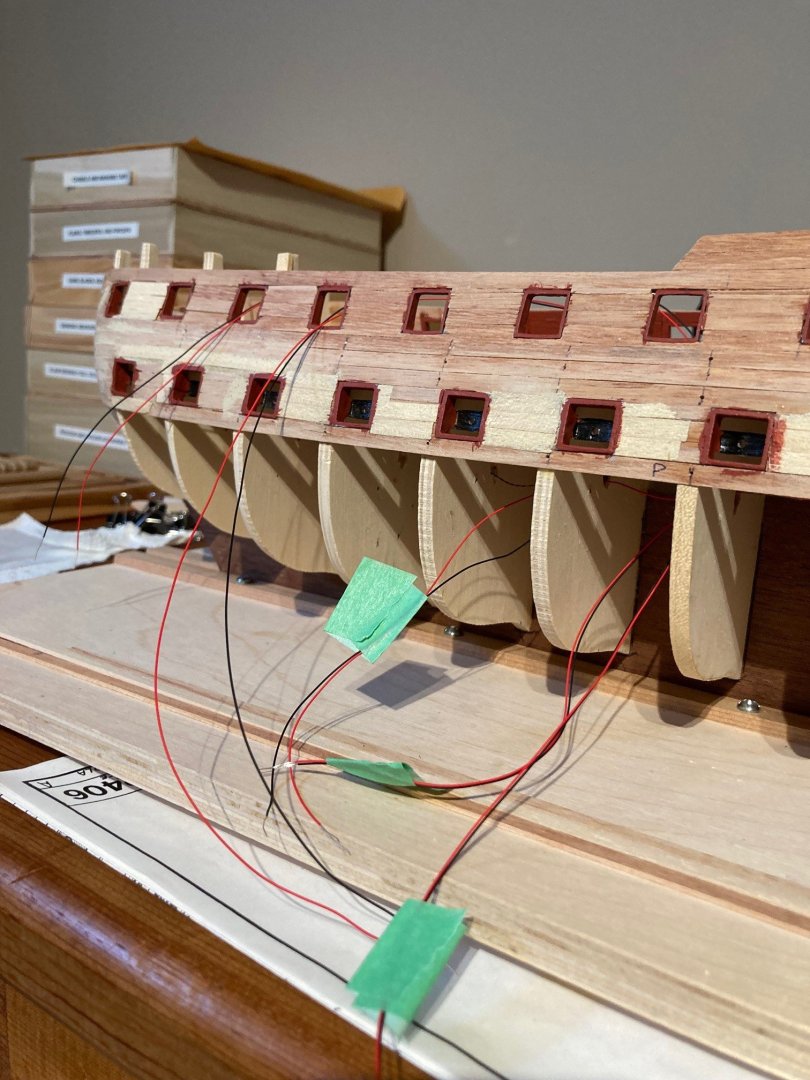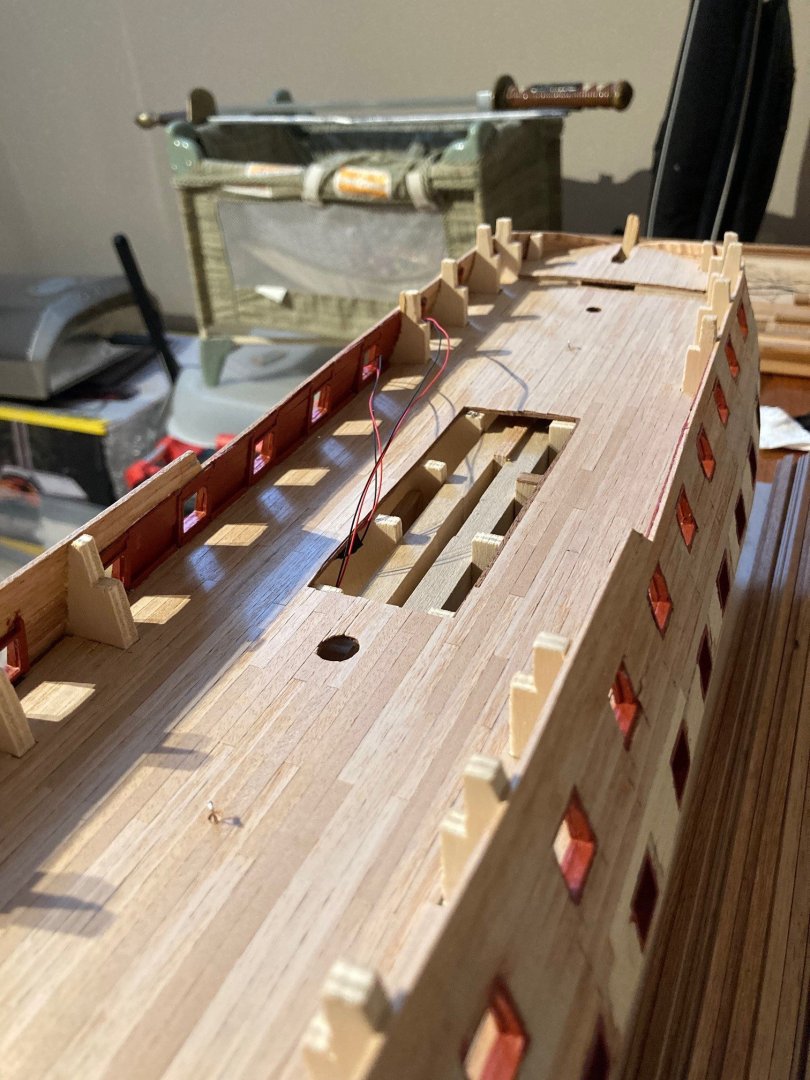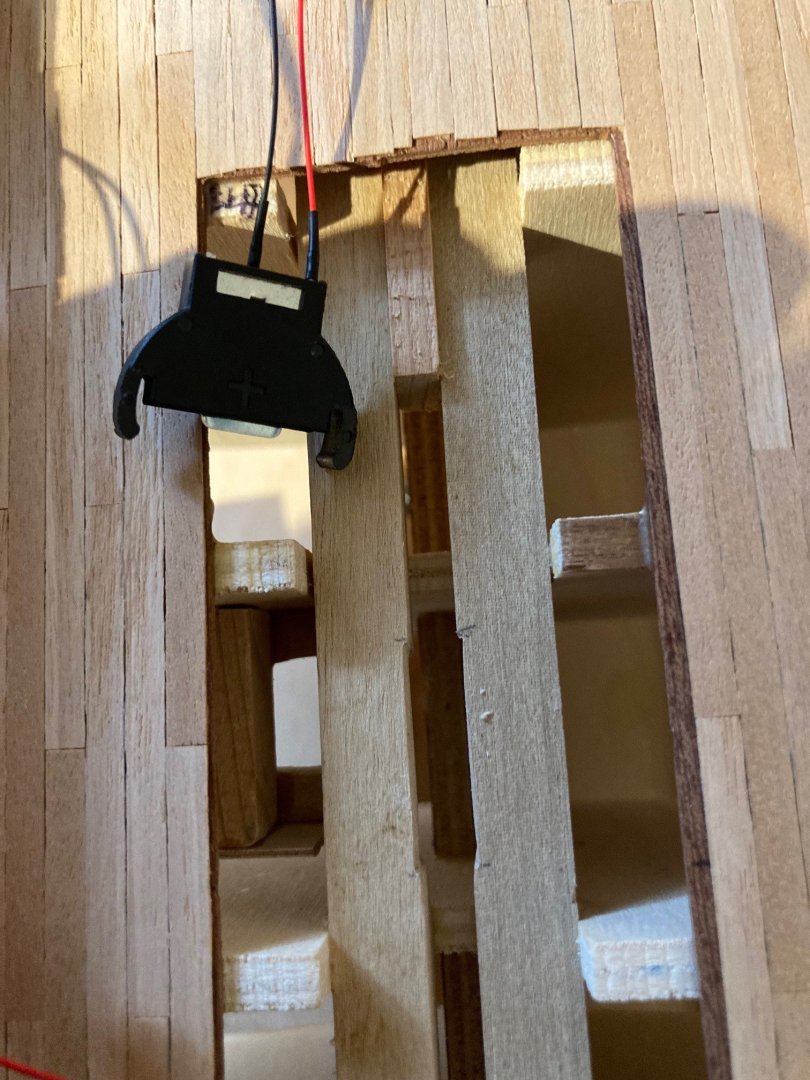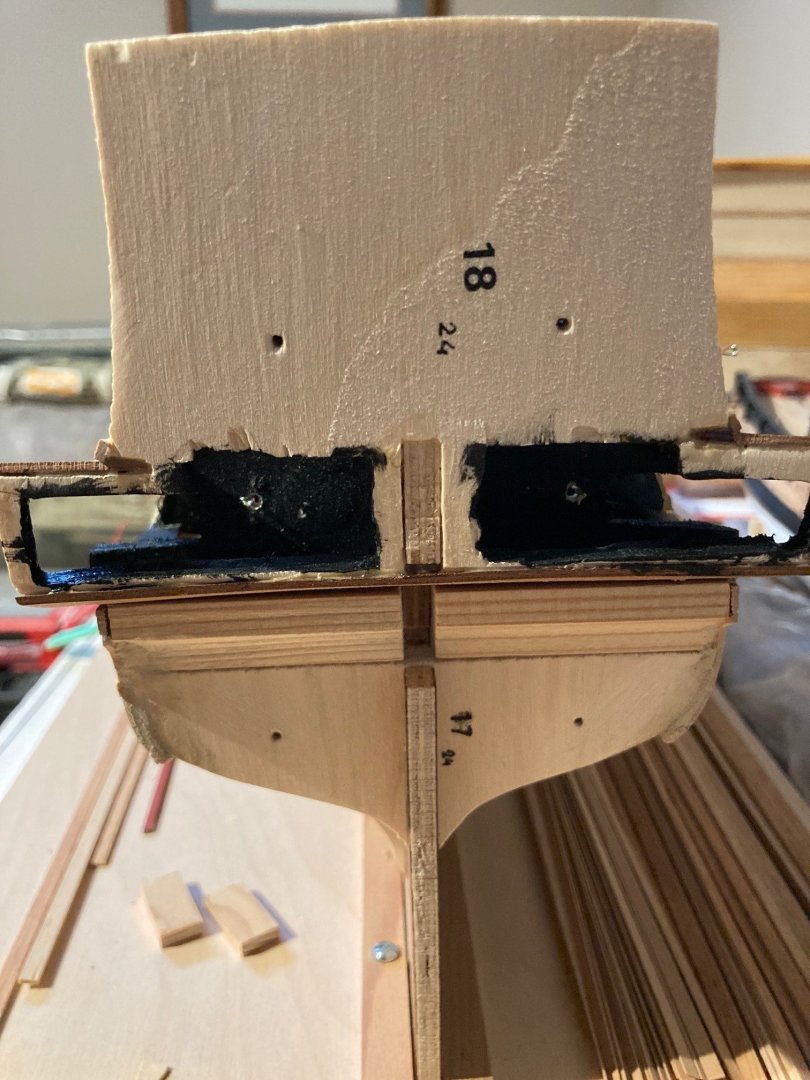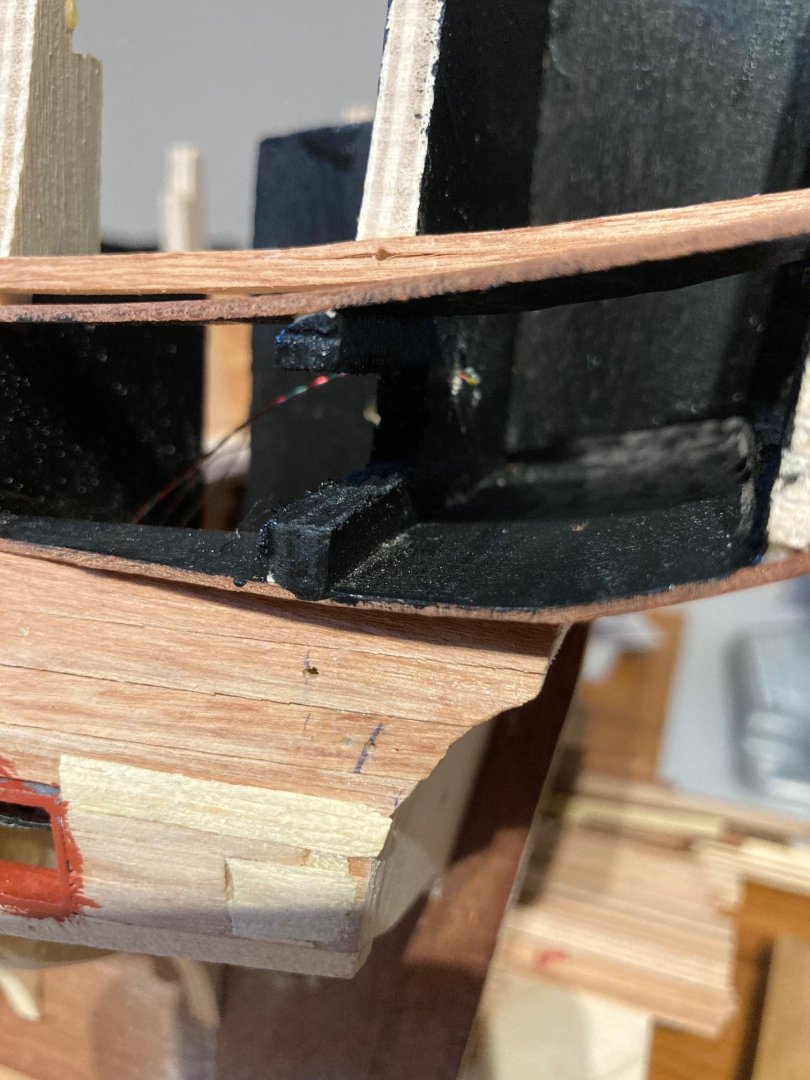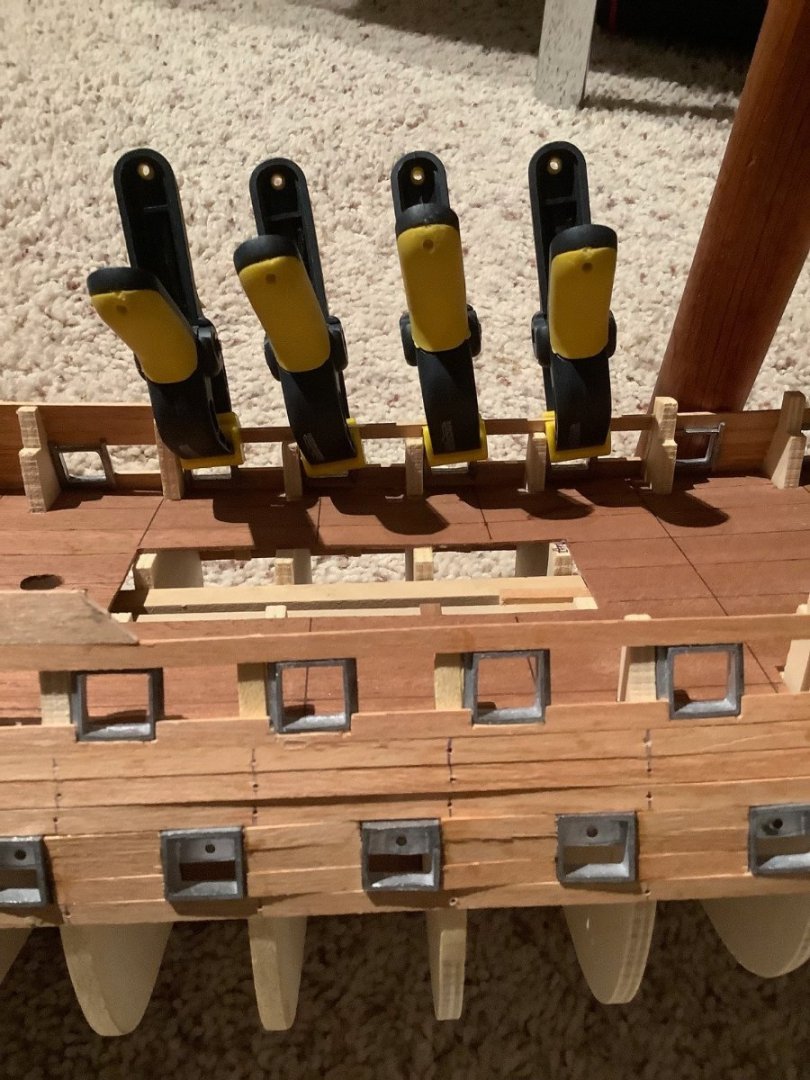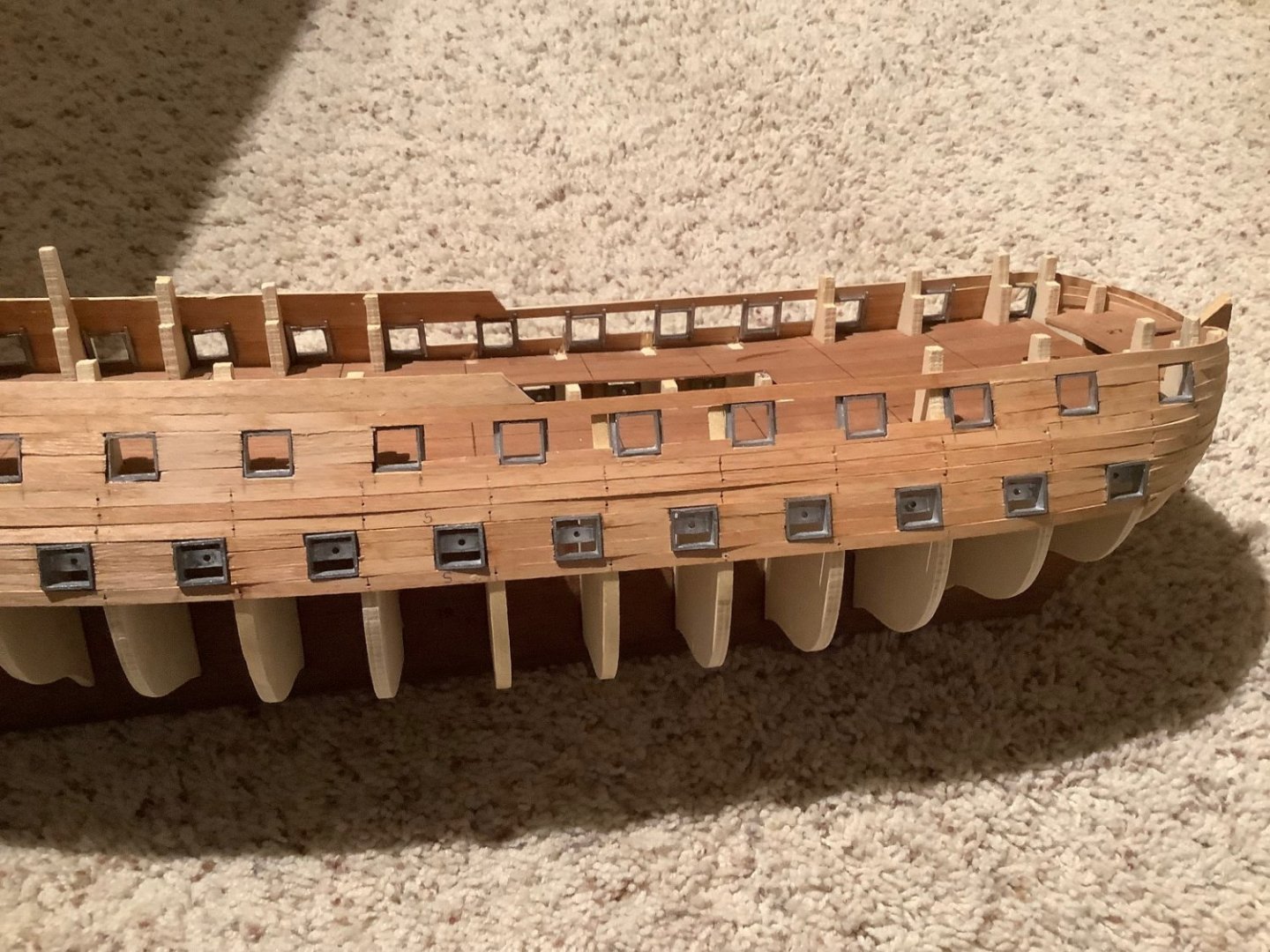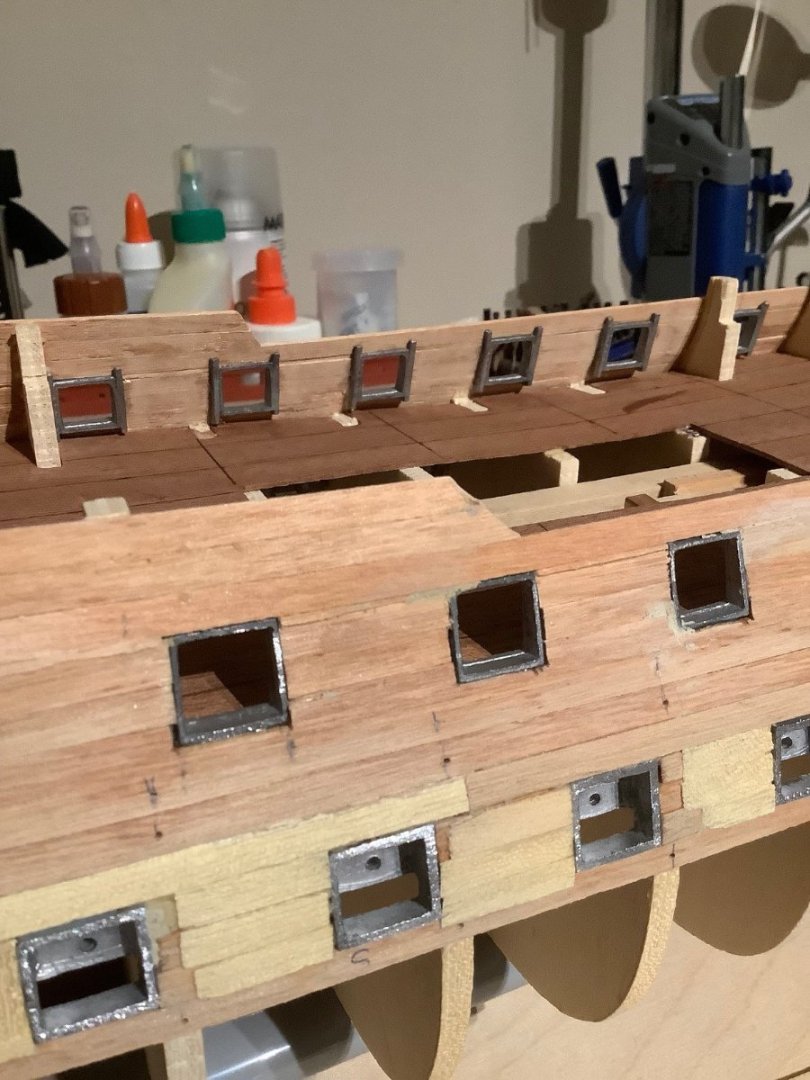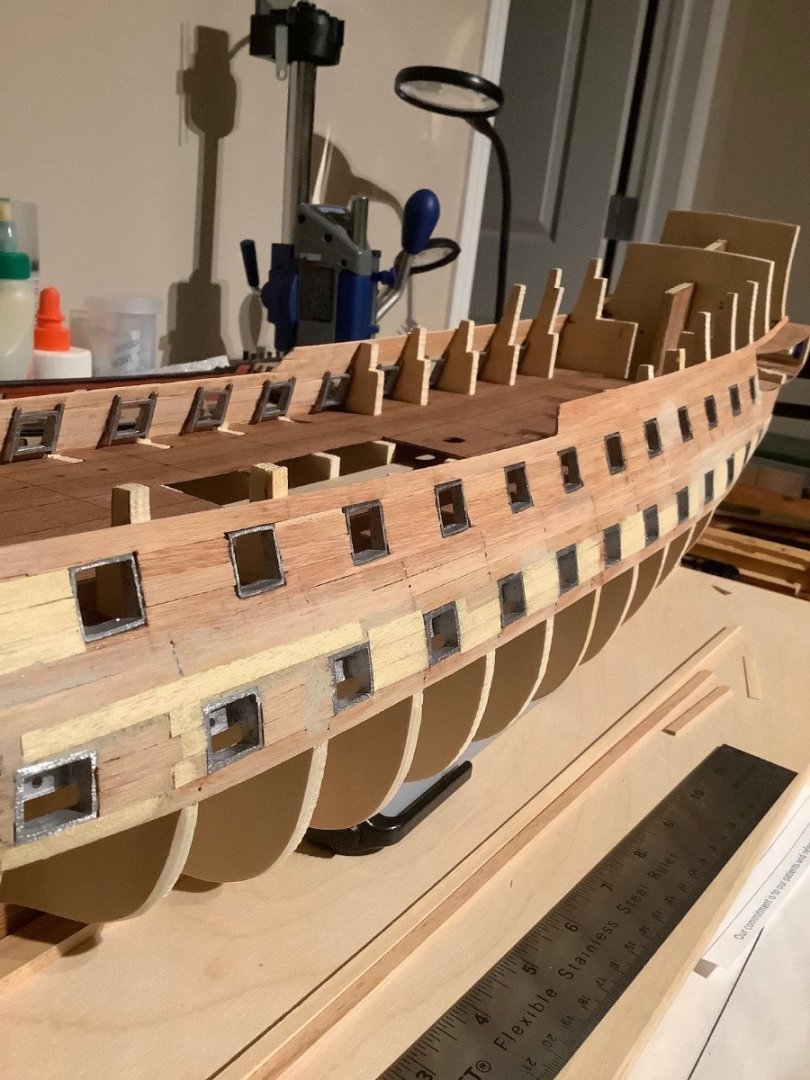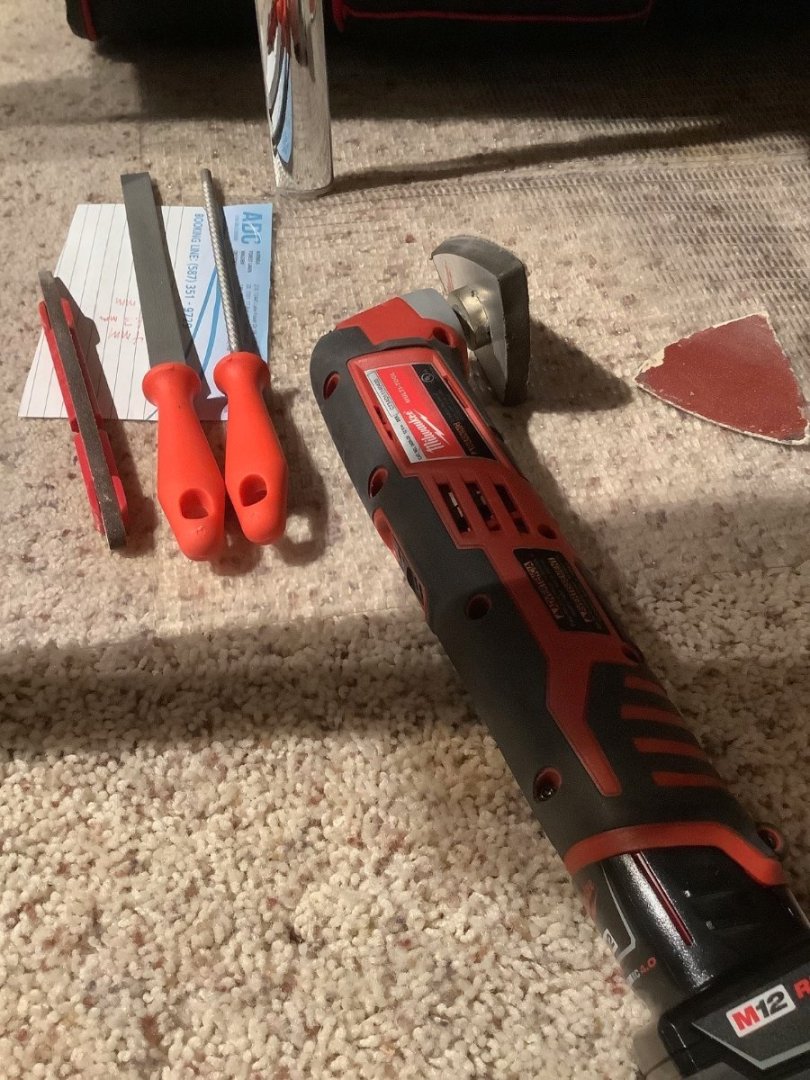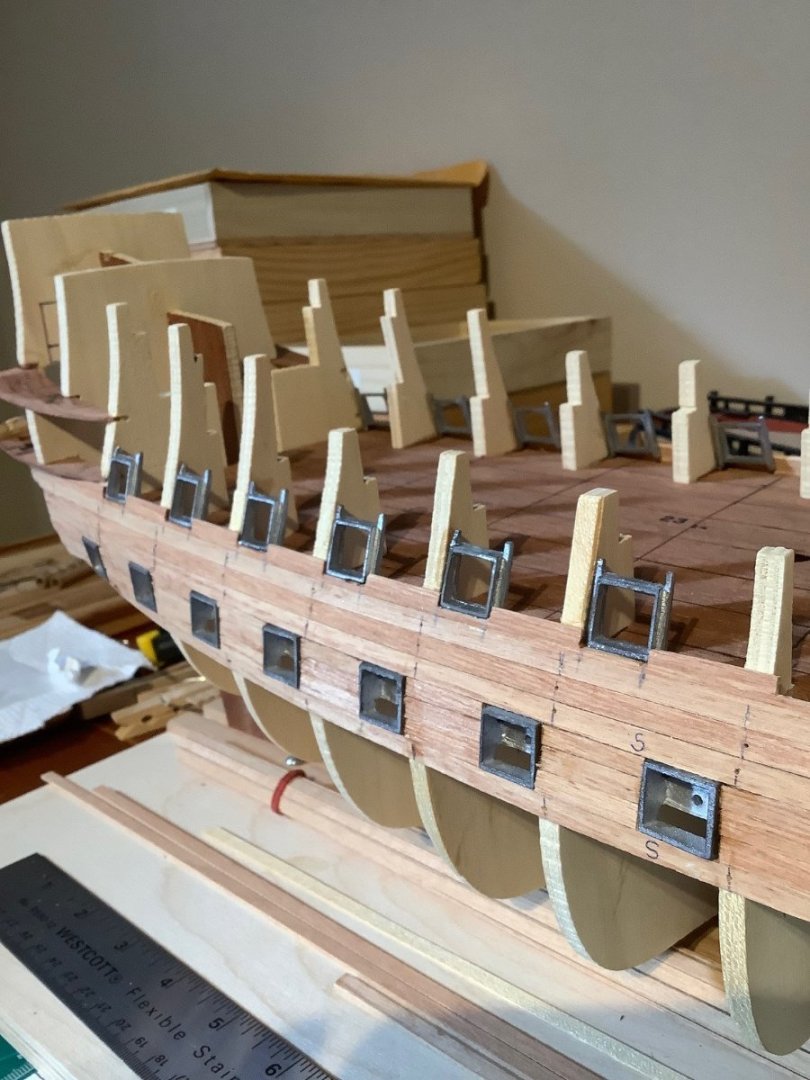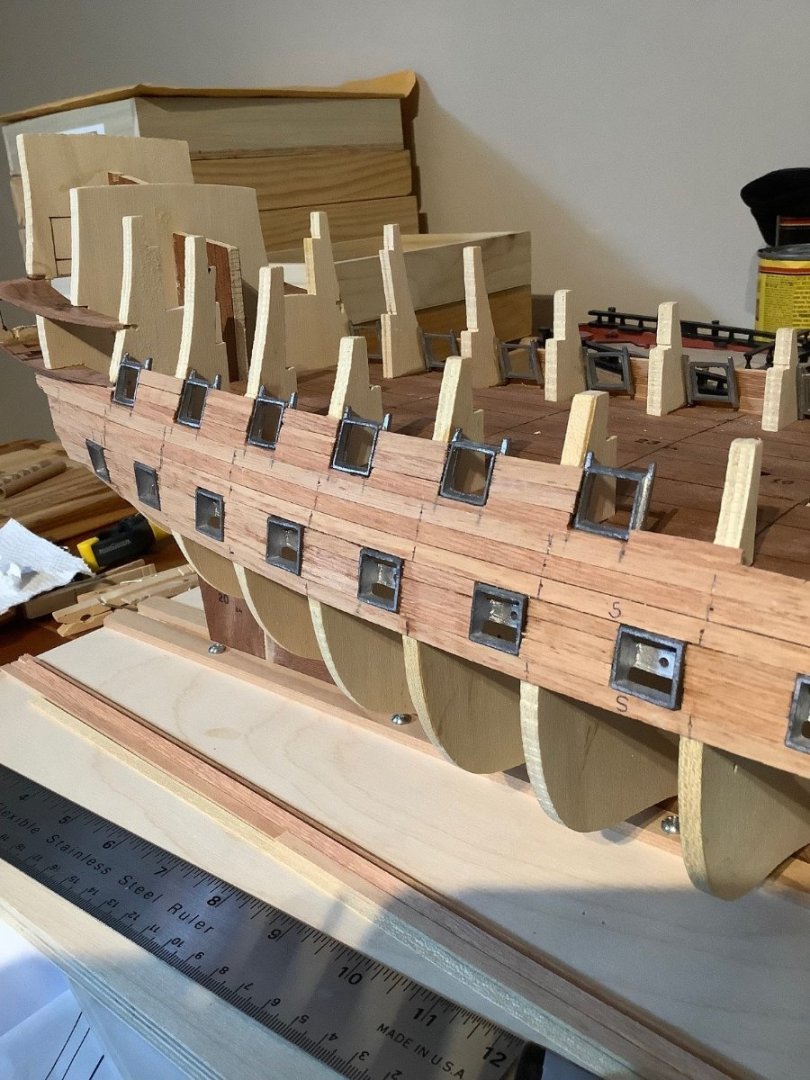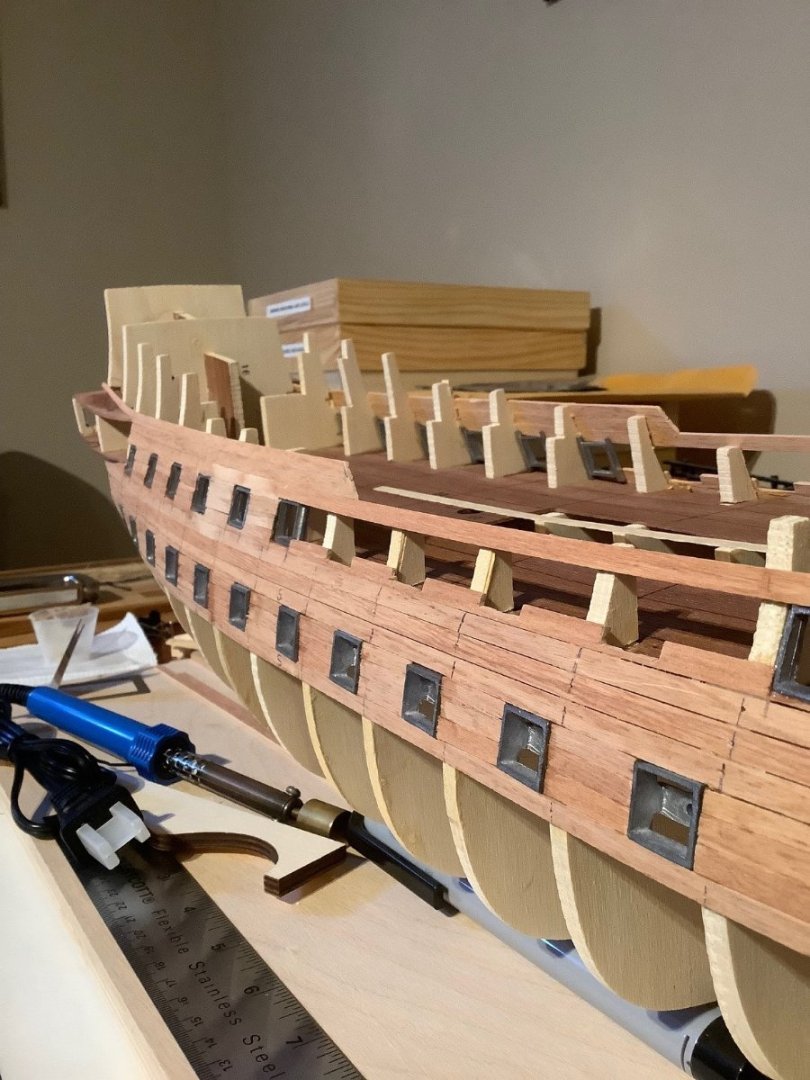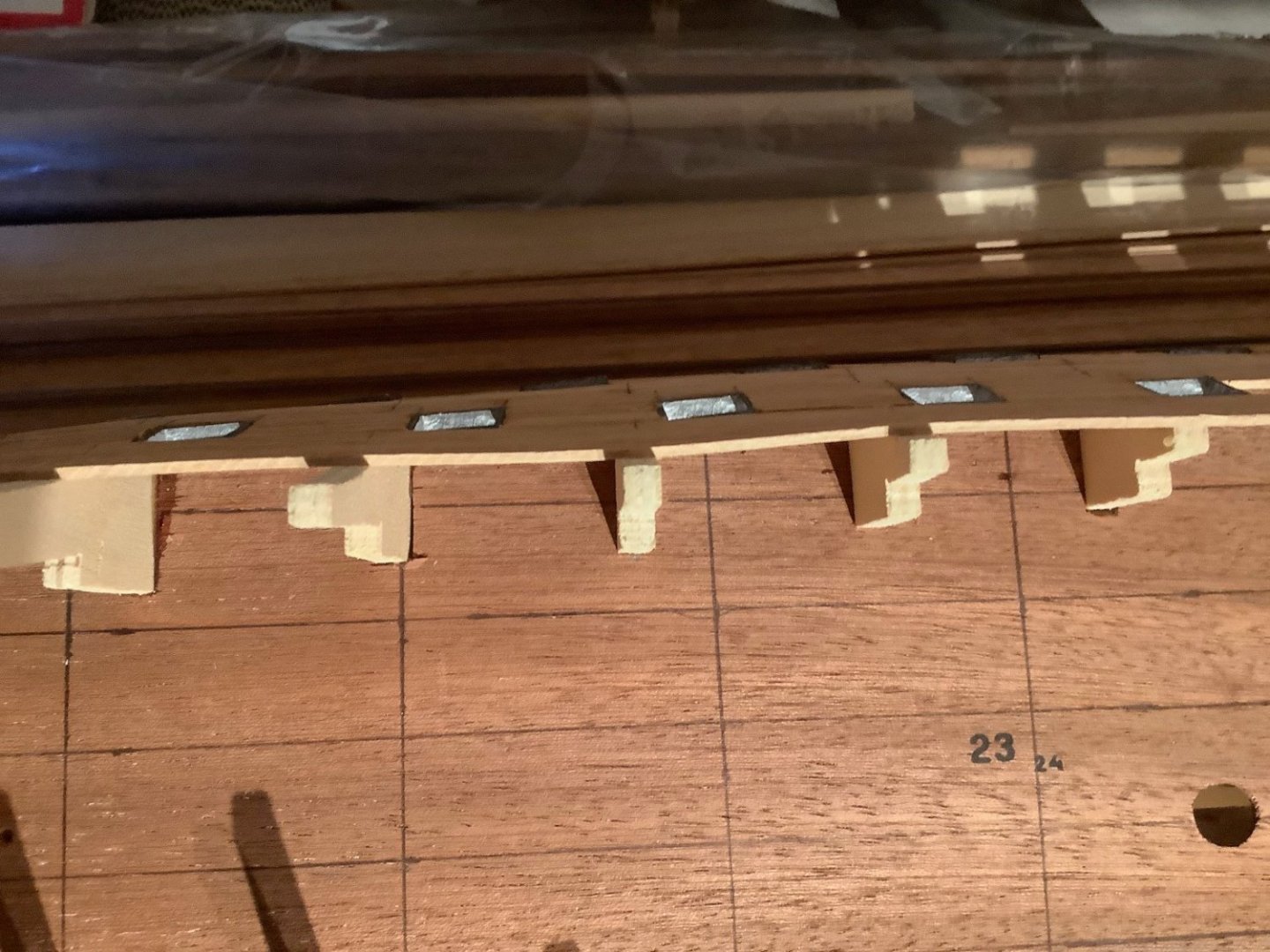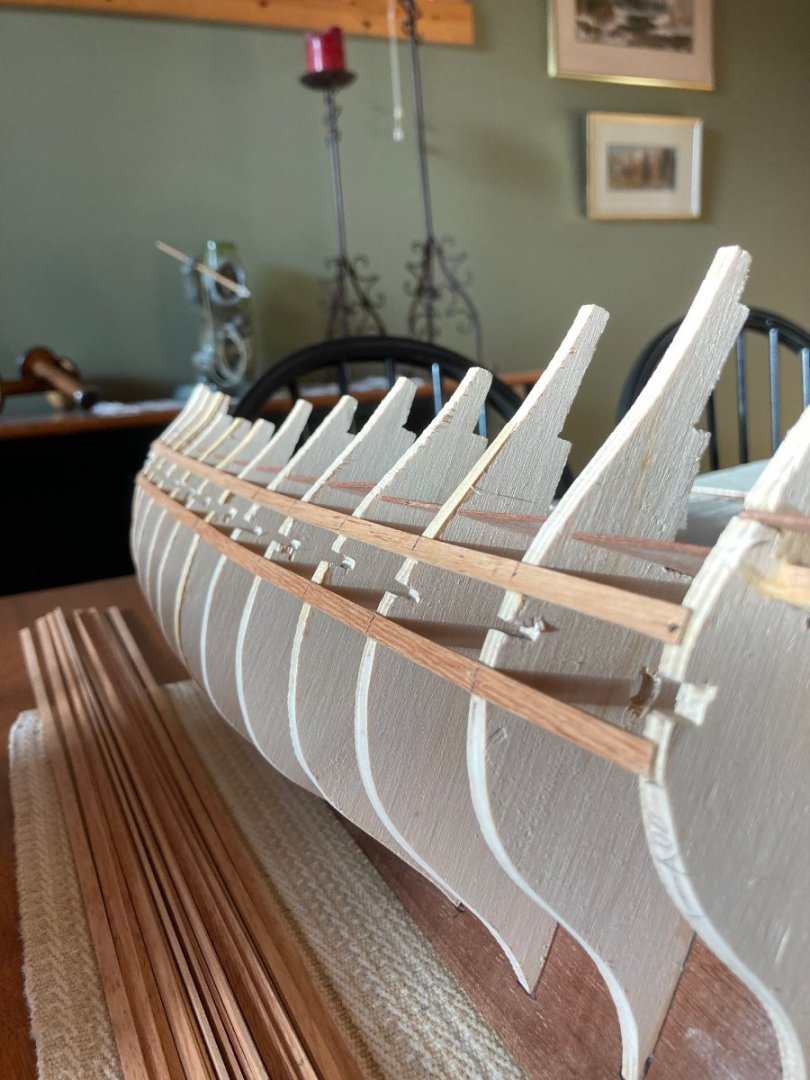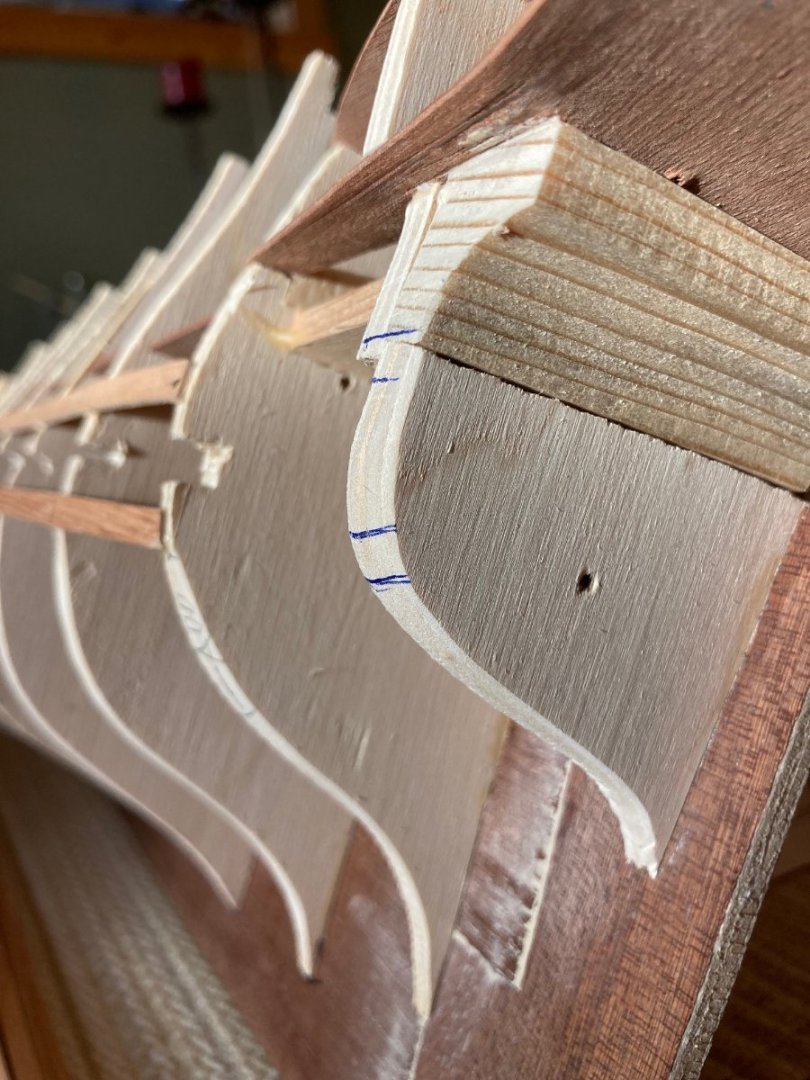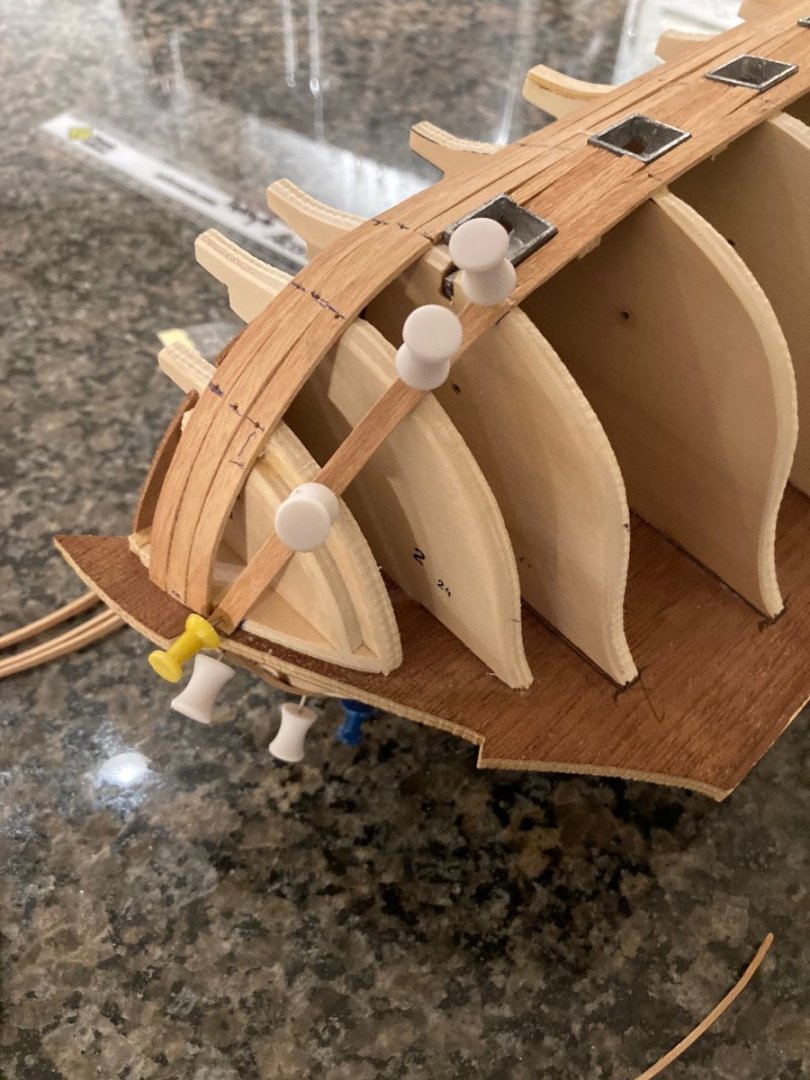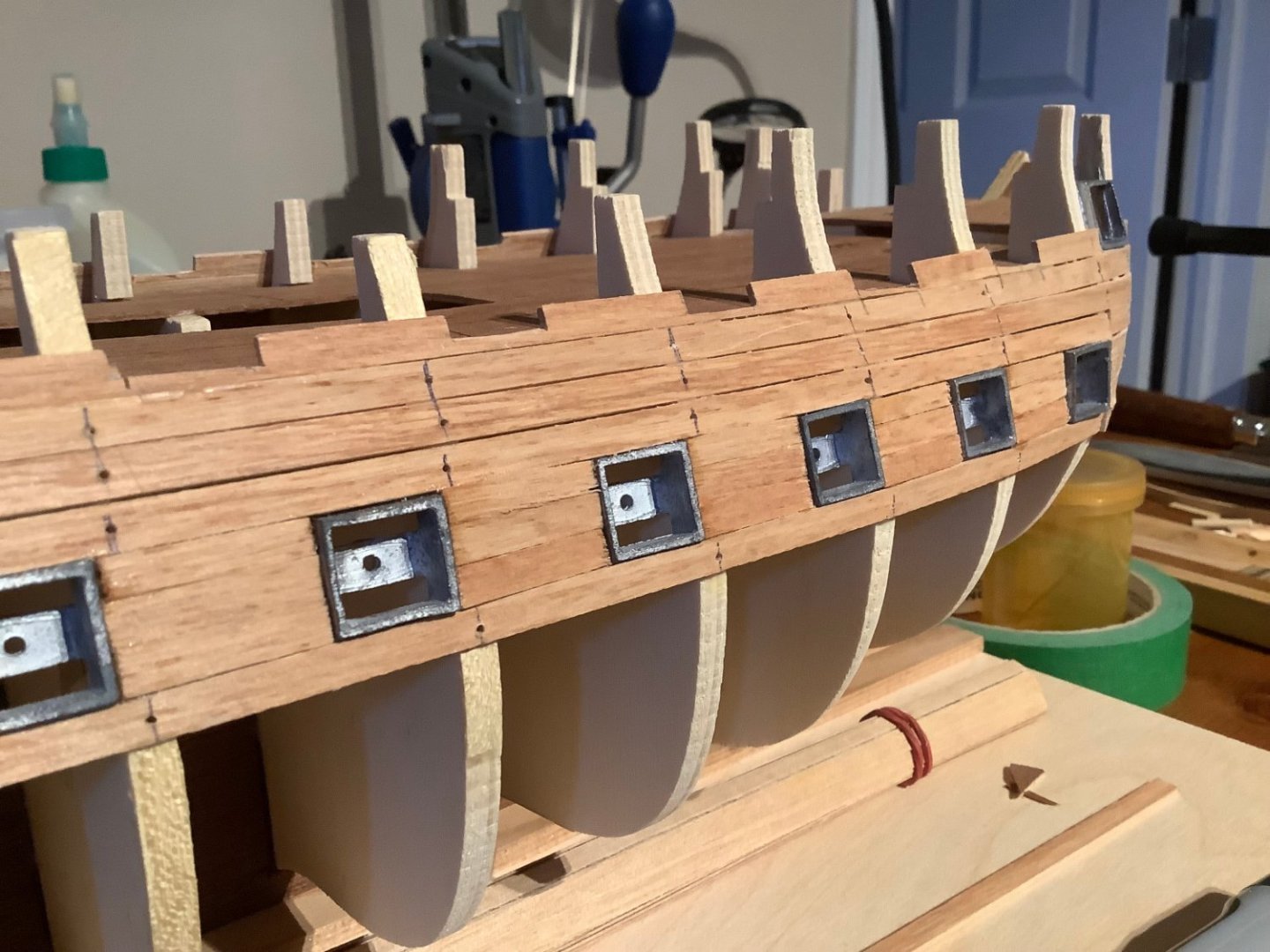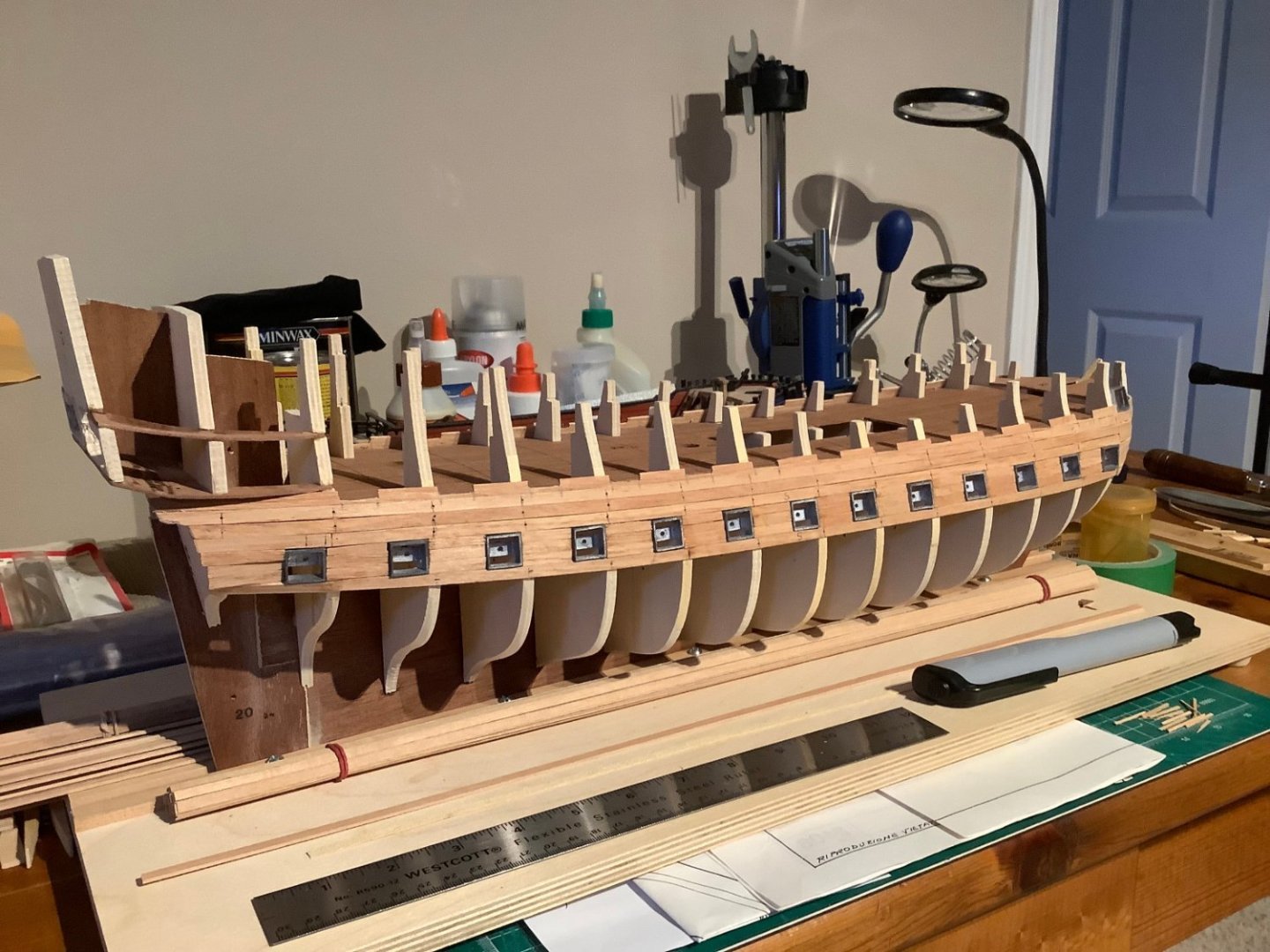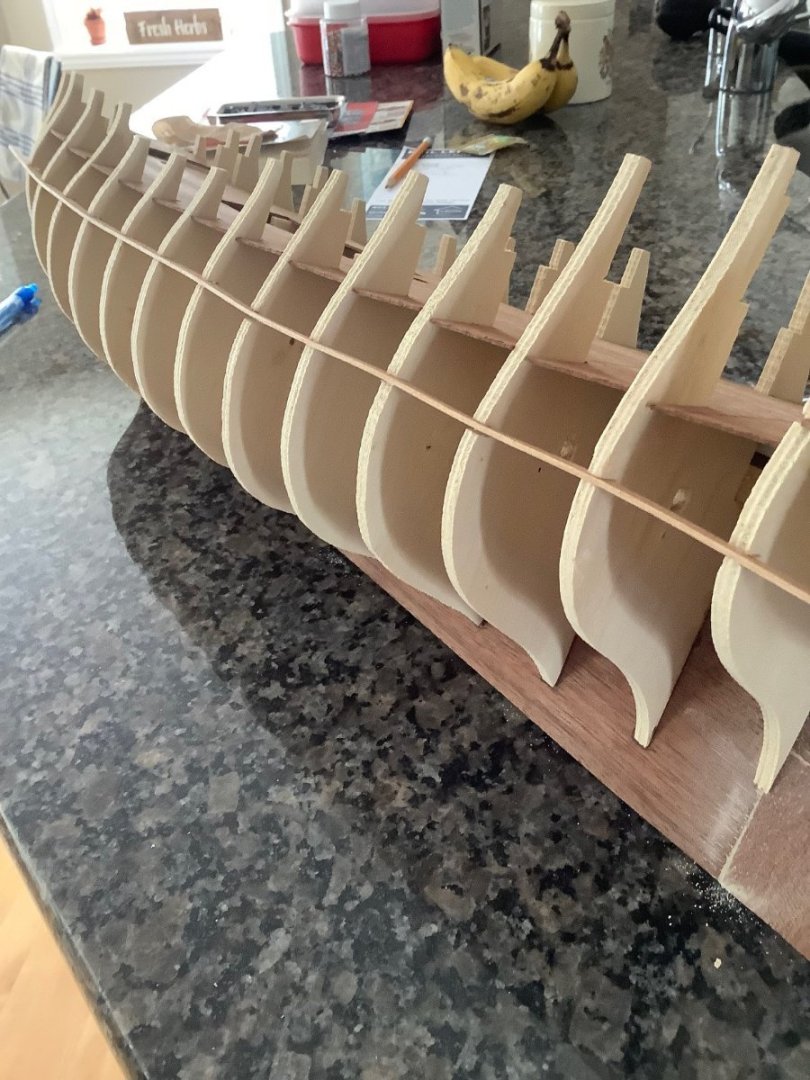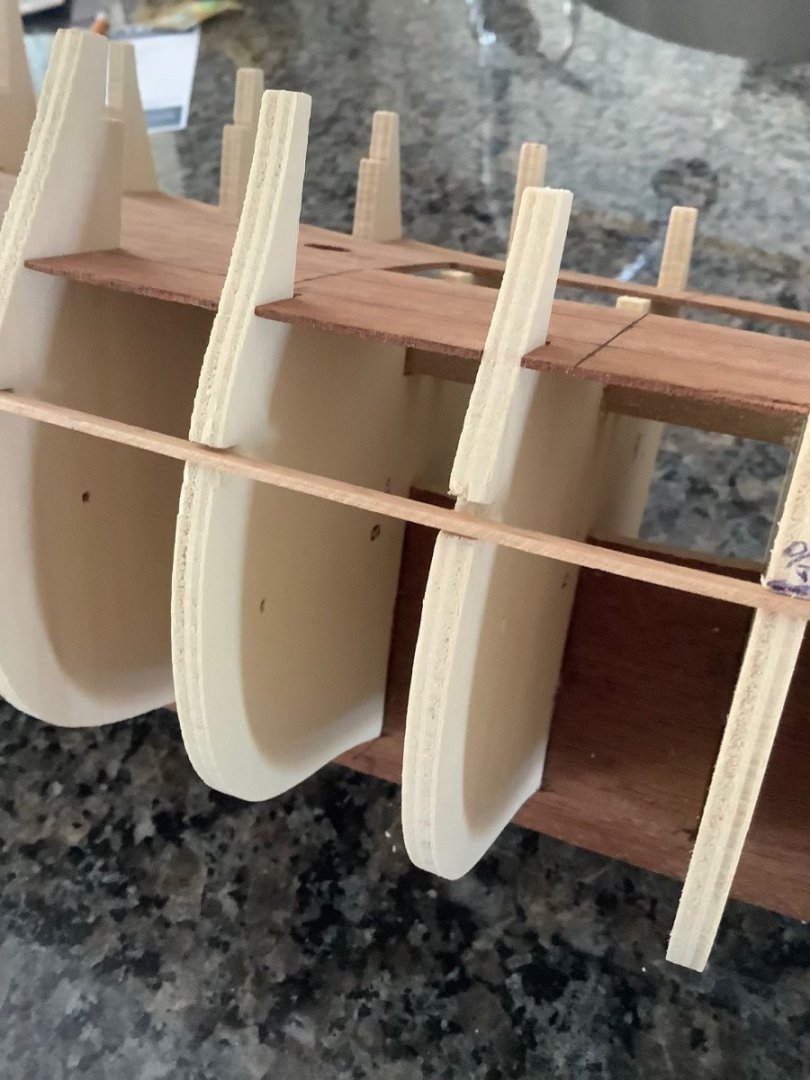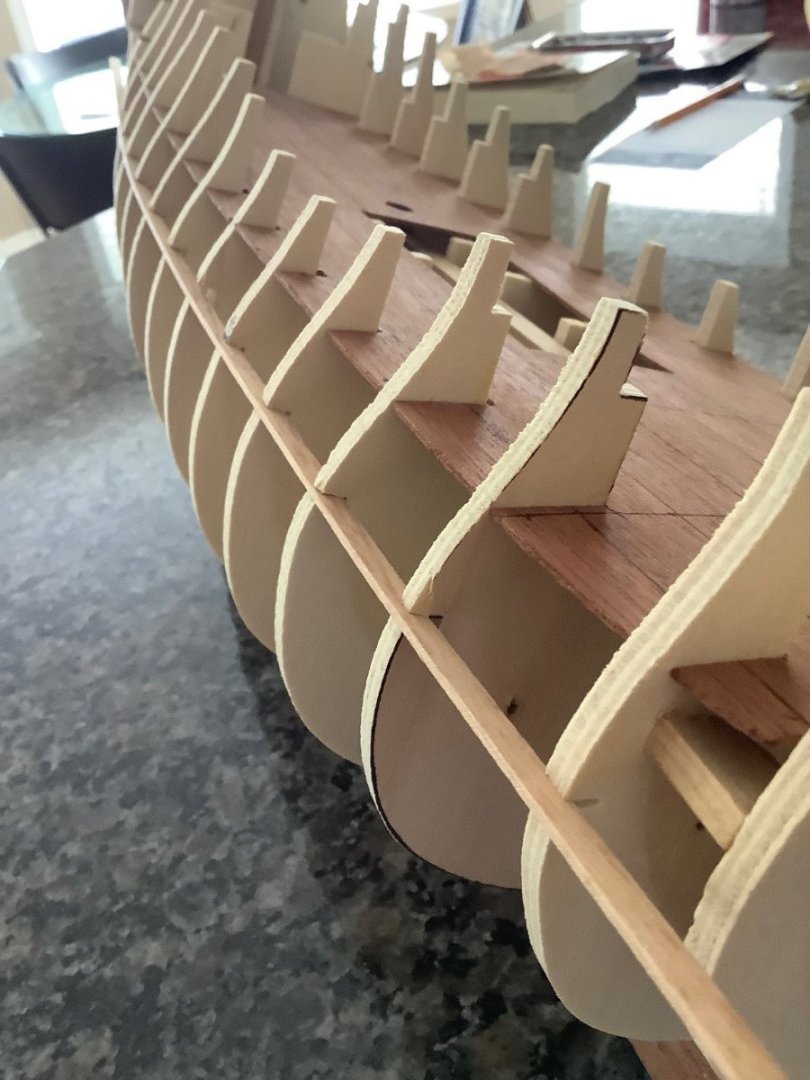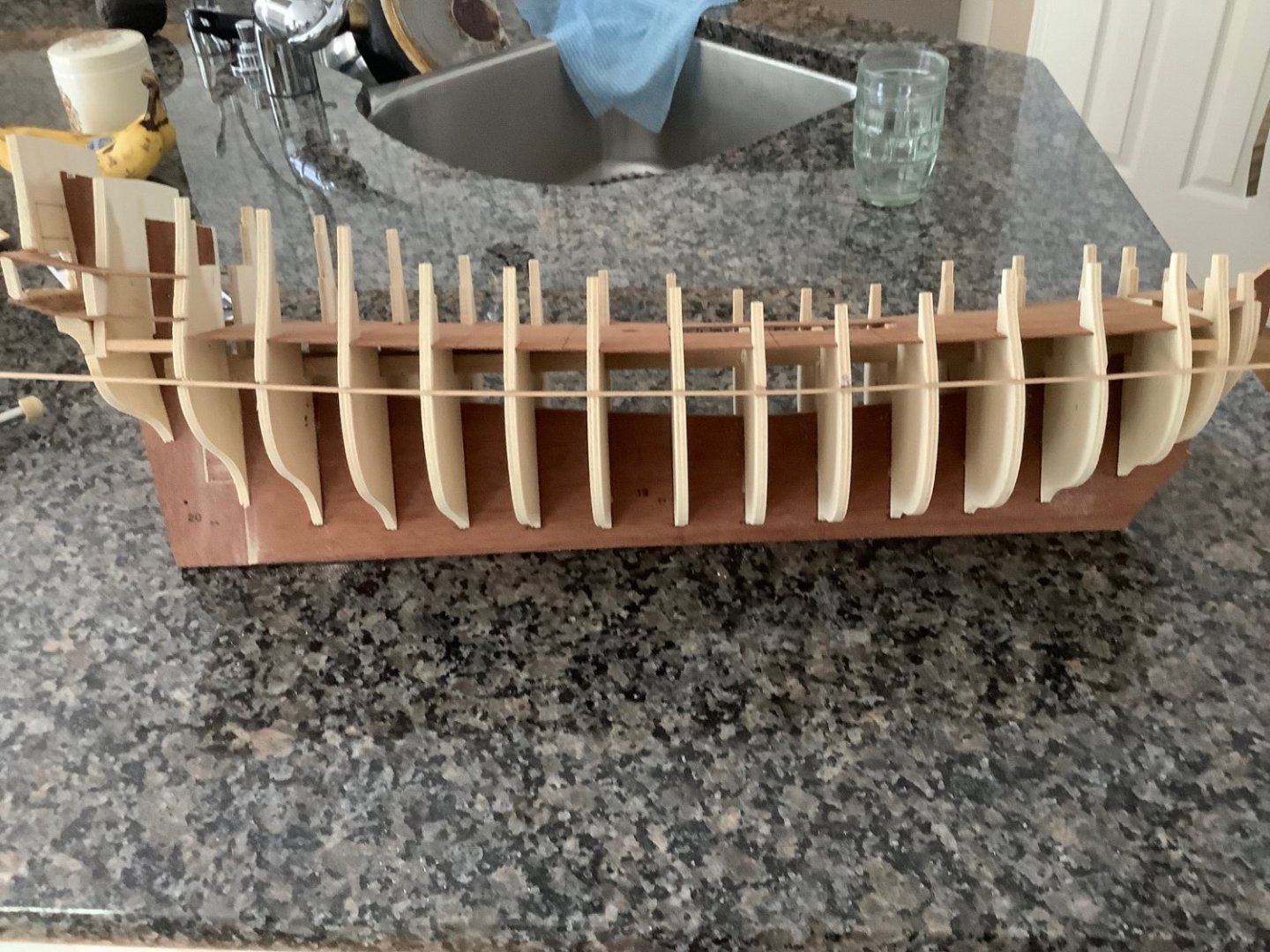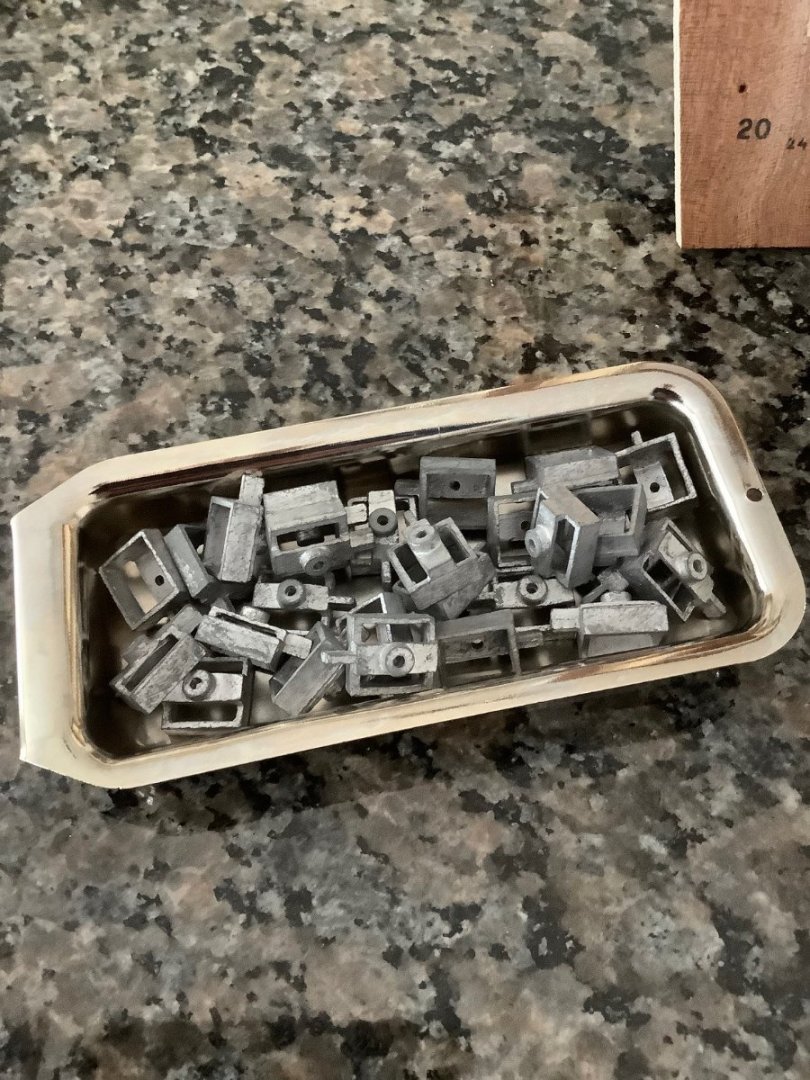-
Posts
549 -
Joined
-
Last visited
Content Type
Profiles
Forums
Gallery
Events
Everything posted by mrcc
-
Also added more details to the deck. Secured the bollards with masking tape so they stayed upright while affixing them to the deck railing with a drop of epoxy. Even though it says 5 minute epoxy, it takes an hour plus to fully cure.
- 32 replies
-
- Sperwer
- Billing Boats
-
(and 1 more)
Tagged with:
-
A little more work done on the sails... I secured the reef points with a spot of Tamiya lacquer and it has stained the sail where the drop dispersed... I thought I had done this once before without ill effects. I will be brushing on a layer of GAC400 to stiffen up the sails in order to simulate a wind blown effect and I hope the blemishes will disappear.
- 32 replies
-
- Sperwer
- Billing Boats
-
(and 1 more)
Tagged with:
-
I had someone else make my sails and trimmed a little off the bottom margins to work with my mast and its length
- 32 replies
-
- Sperwer
- Billing Boats
-
(and 1 more)
Tagged with:
-
- 32 replies
-
- Sperwer
- Billing Boats
-
(and 1 more)
Tagged with:
-
I am certainly not a painter! Good enough as I am tired of fiddling with my roll of 2mm Tamiya masking tape. This is the final color scheme...
- 32 replies
-
- Sperwer
- Billing Boats
-
(and 1 more)
Tagged with:
-
Looking good… You sure have an excellent work ethic in your output and production of finished kits. I was stalled for over a year before I tackled the rigging on my Santa Maria. Yep, the GAC400 is great… look forward to seeing your finished sails. Cheers!
-
Been a bit lazy lately... Did manage to get my LED wiring setup completed. I purchased the kit from Evan Designs (all they do is miniature LED setups for hobbies). I spec'd out the pico LED lights with a 3 volt button battery as energy source. Everything came pre-wired and just a matter of running the line back to the battery source which I have hidden under the main deck grating panel which I will make removable in order to access the battery and supplied switch. I put two LEDs in the aft cabin and then 4 others along the length of the deck in order to illuminate under the gratings of the above positioned decks. I created a little battery holder under the main deck grating for easy access once the model is finished... I hope I have enough lighting to do the model justice.
-
Check out Dusek’s Santa Maria which is the rebrand of the Mamoli version of the kit. Highly recommend that version.
-
Some additional images of my framing process. The external hull profile is very poor between the gun ports with my effort, especially on the deck where the dummy ports are located as evident on the second picture. Instead of filling later, I decided to add strips between the ports varying in depth from .5 and 1.5 mm, depending on where the defects were most pronounced and then sanded back. Mamoli vintage kits are notorious for not supplying enough material so I decided to fill with some scrap wood and then with my Milwaukee multitool, sanded flush to the gun port exterior margins. Quick and easy work... The pictures may not show it but the exterior hull is quite smooth without waves and undulations.
-
Continuing work on the cannon port frames. Tedious work but my measurements have panned out well as I have nice gentle and aligned sweeps of the two gun deck ports. Don't know how I missed adding the shim(s) to the outside frame on the last picture. Anyways, cut back the plank off the frame and slid in a 1.0mm shim. With these Mamoli vintage kits... there are lots of form and fit issues of parts and you always have to be diligent.
-
Wow… how did I miss this build log… Excellent job!
- 236 replies
-
- artesania latina
- kitbashing
-
(and 2 more)
Tagged with:
-
Thanks Peter for the compliments… I am eastern European myself but every time I am in Holland, I feel absolutely at home! My wife’s roots can be traced back to the 1600s to Rotterdam with a paternal branch of the family tree being traced to the late 1700s in Indonesia. Then of course all the Dutch left the East Indies after WWII.
-
There is a number of ways noted on some of the other Friesland build logs on MSW in how to frame out the gunports but I followed the directions per the Mamoli plans with success. I loose fit the ports and created the ledger boards above and below watching for the sweep from the bow to stern. Once satisfied, I then glued the ports in with CA glue tweaking their alignment in the initial seconds before the glue firms up within the confines of the ledger boards directly above and below. I planked above noting that the main gun deck needed to be accounted for and according to the plans, there was 18mm from the bottom edge of the main gun deck ports to the top of the dummy port edges. On visual inspection, the gun ports adequately followed the main deck sweep with some minor adjustments of the flanges between frames, either up or down by a mm or two as they are not secured and essentially float between the frames at the moment (PS easier to visualize the individual flanges between the frames if you look at my posted images from yesterday). I am basically current now in terms of the build log and current state of the build. Progress will be slower at this time... Thanks for all the likes!
-
Last post for today... Going to use the supplied cast metal gun ports but as you can see from the first photo, my kit was not so lucky as other Friesland builds for getting a nice clean run when putting a strip of 1.5x5mm wood into the precut slots. I unfortunately had the pleasure of widening and deepening the slots in order for the gun port tabs to fit into place and get that nice sweep of the gun ports laid out.
About us
Modelshipworld - Advancing Ship Modeling through Research
SSL Secured
Your security is important for us so this Website is SSL-Secured
NRG Mailing Address
Nautical Research Guild
237 South Lincoln Street
Westmont IL, 60559-1917
Model Ship World ® and the MSW logo are Registered Trademarks, and belong to the Nautical Research Guild (United States Patent and Trademark Office: No. 6,929,264 & No. 6,929,274, registered Dec. 20, 2022)
Helpful Links
About the NRG
If you enjoy building ship models that are historically accurate as well as beautiful, then The Nautical Research Guild (NRG) is just right for you.
The Guild is a non-profit educational organization whose mission is to “Advance Ship Modeling Through Research”. We provide support to our members in their efforts to raise the quality of their model ships.
The Nautical Research Guild has published our world-renowned quarterly magazine, The Nautical Research Journal, since 1955. The pages of the Journal are full of articles by accomplished ship modelers who show you how they create those exquisite details on their models, and by maritime historians who show you the correct details to build. The Journal is available in both print and digital editions. Go to the NRG web site (www.thenrg.org) to download a complimentary digital copy of the Journal. The NRG also publishes plan sets, books and compilations of back issues of the Journal and the former Ships in Scale and Model Ship Builder magazines.



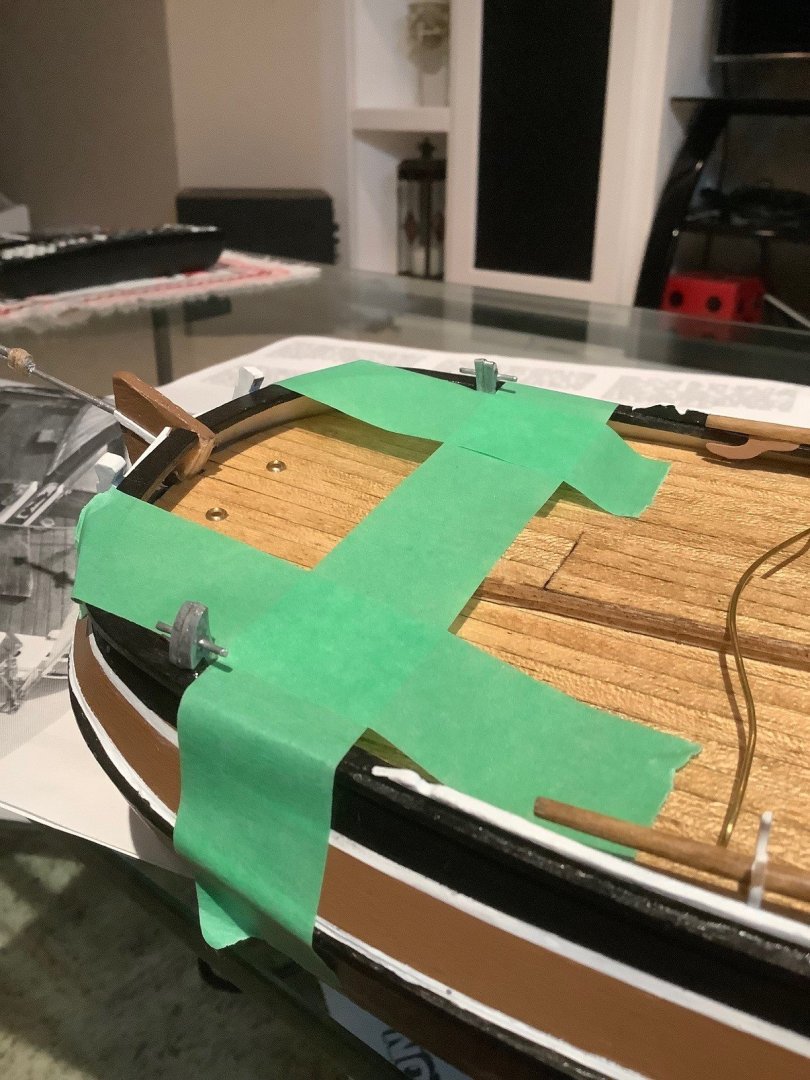
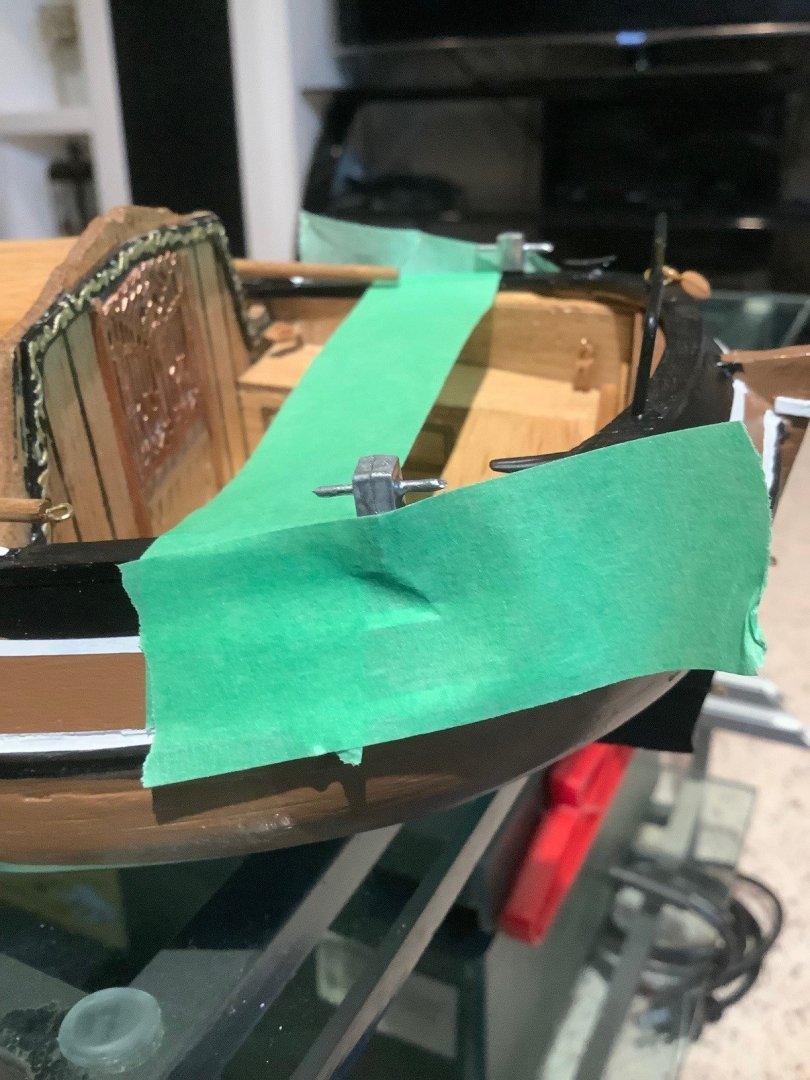
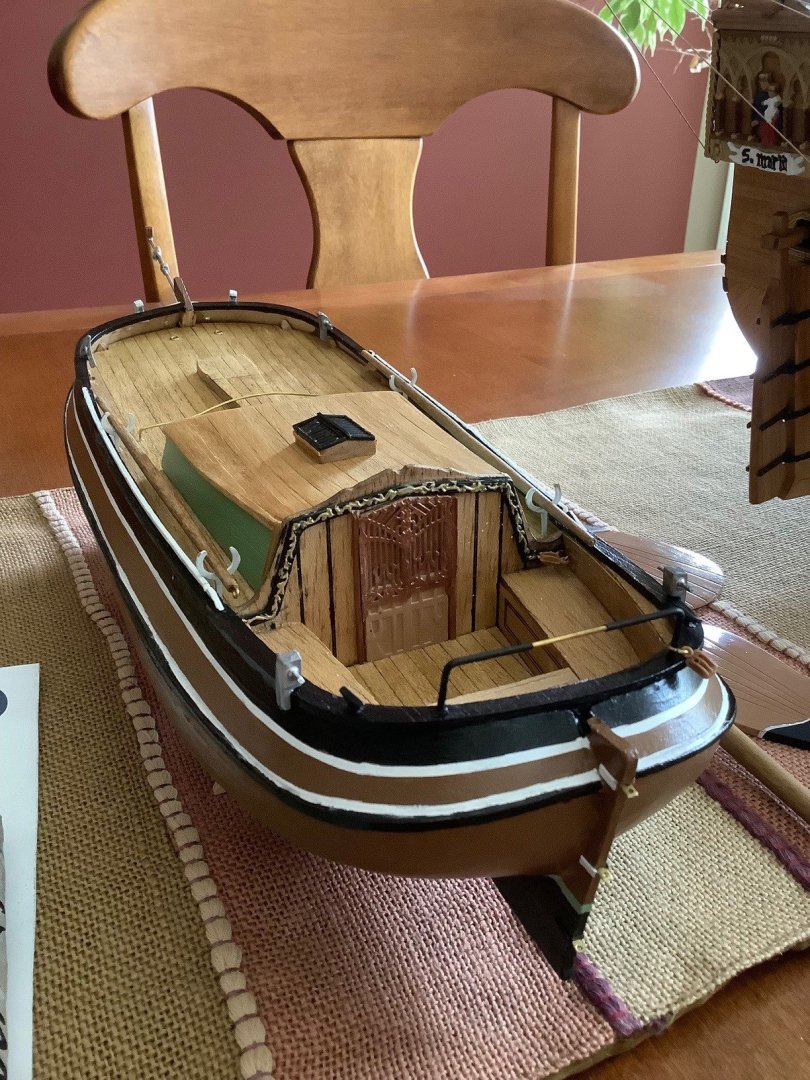

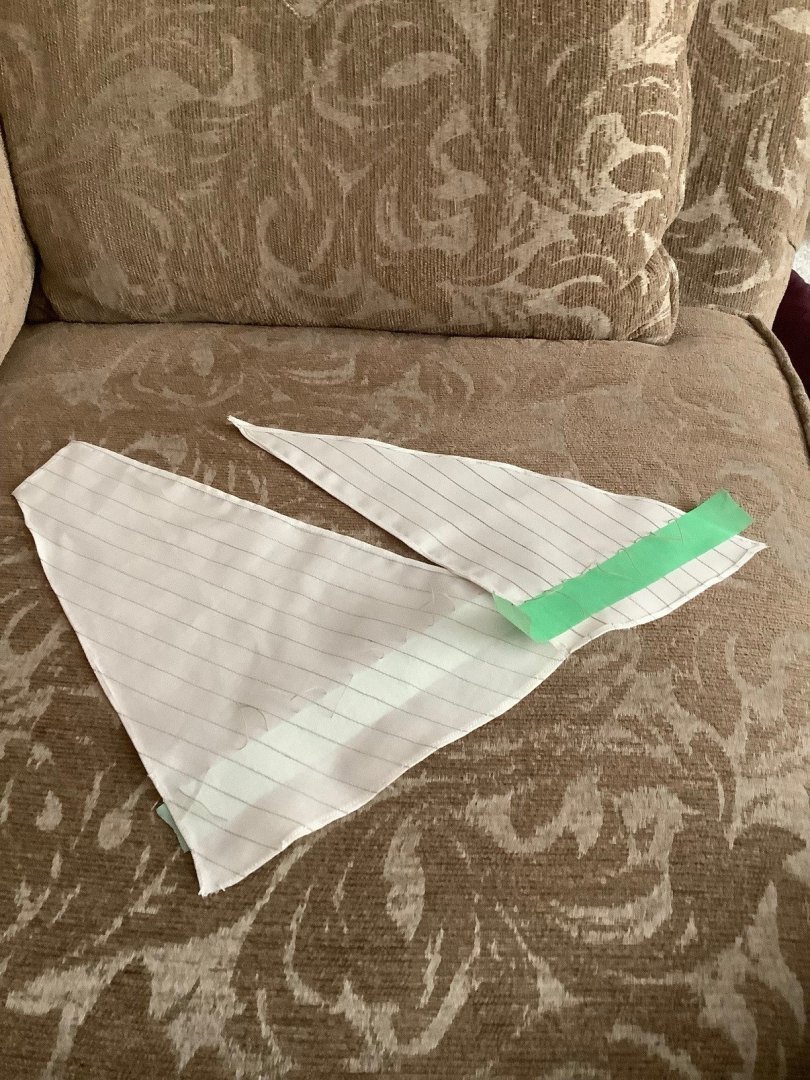
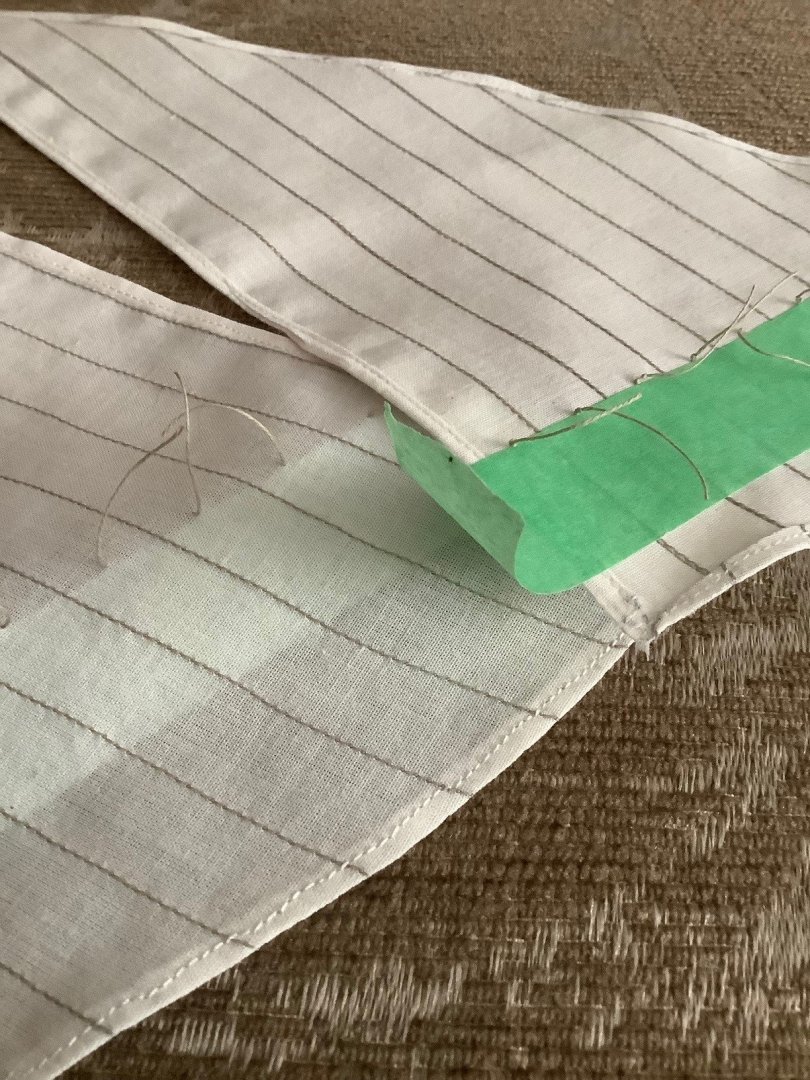
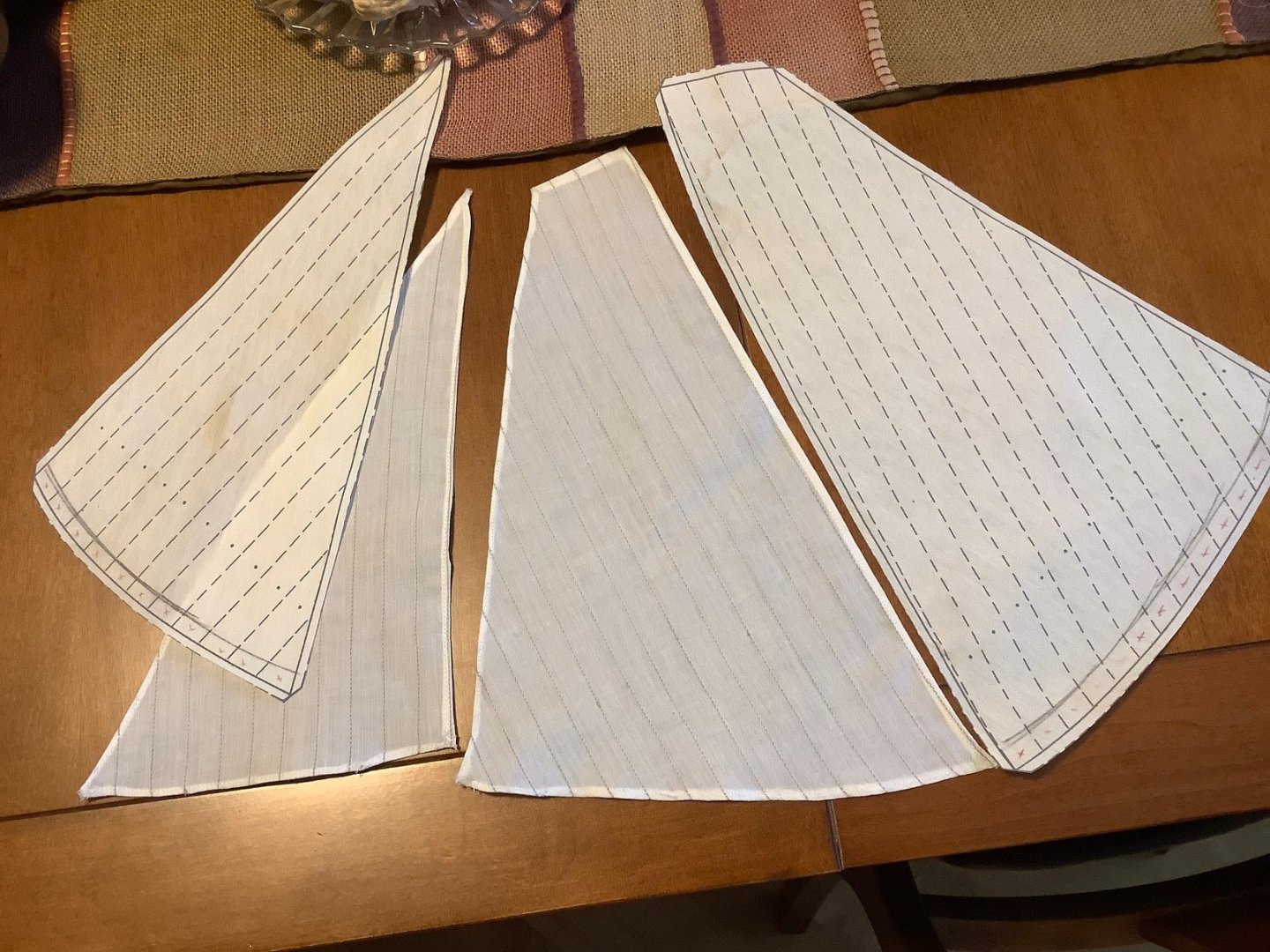
.jpg.a81995e84ae3b2dafdf64a29e0424ccb.jpg)
